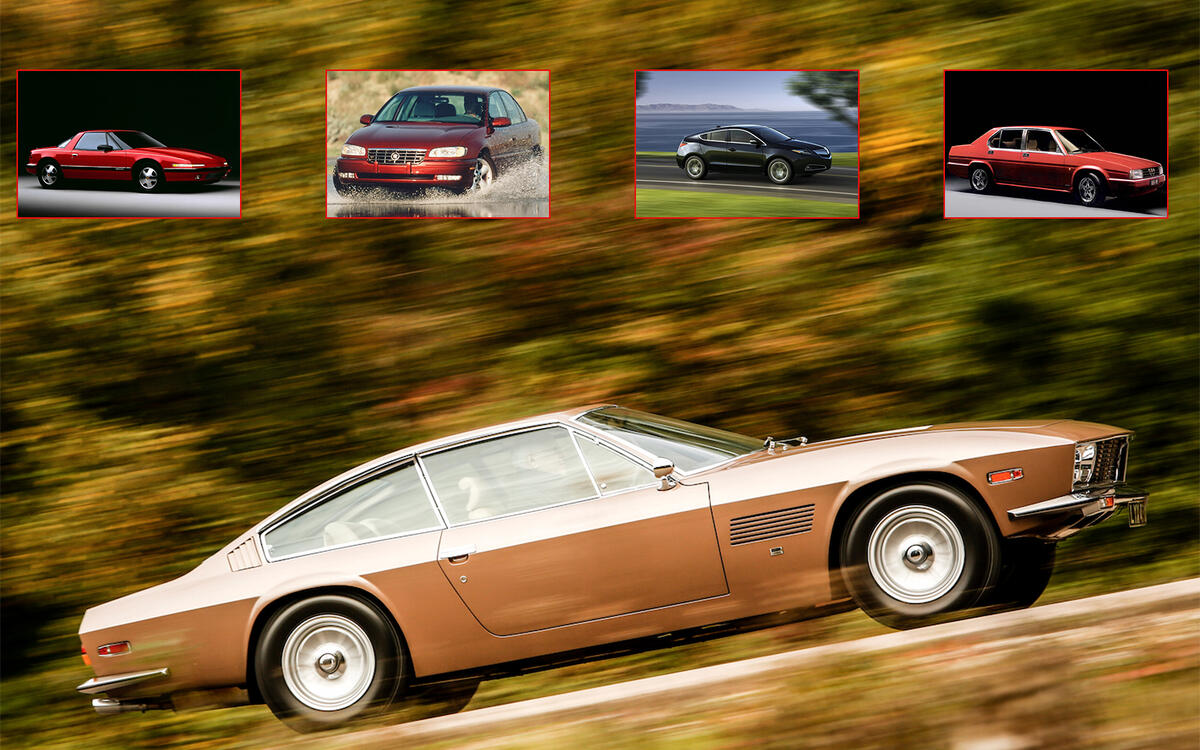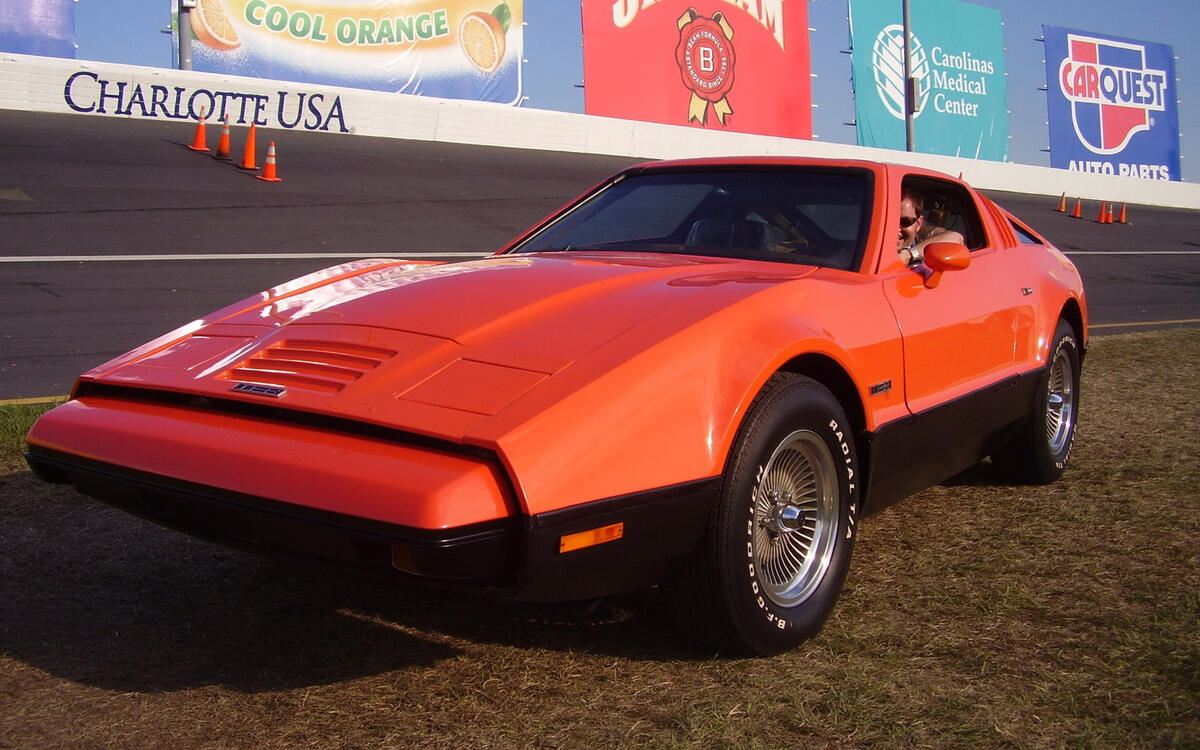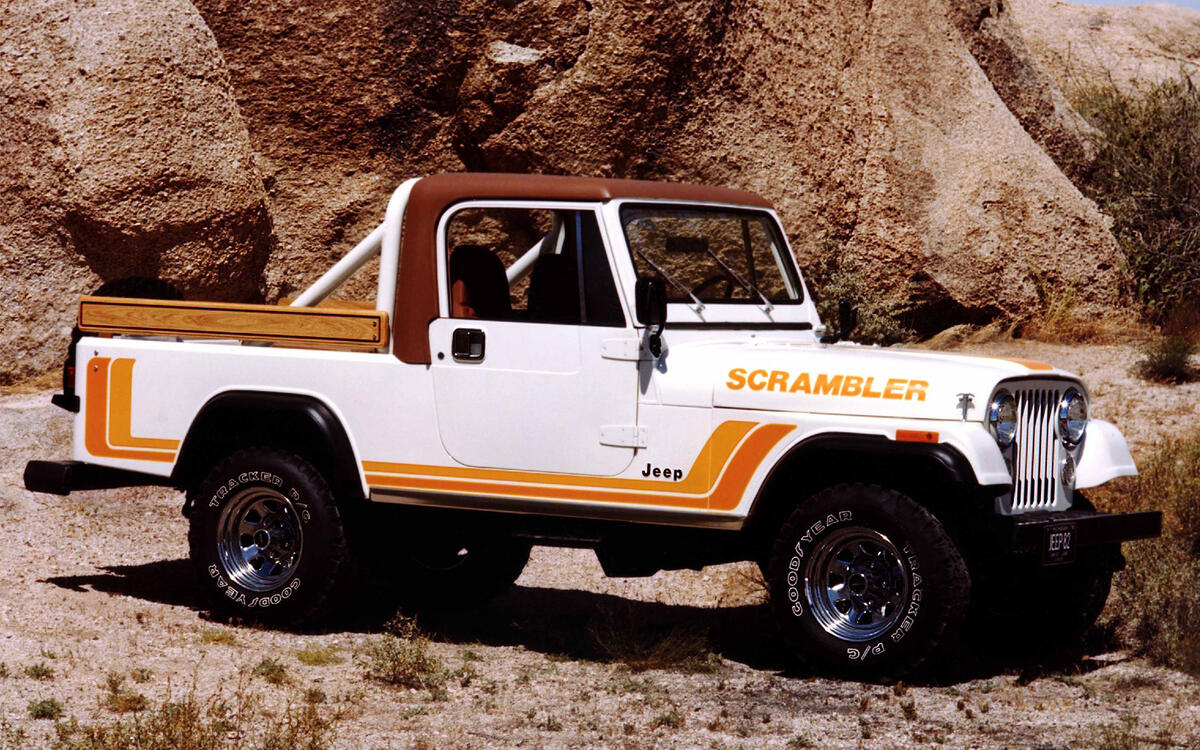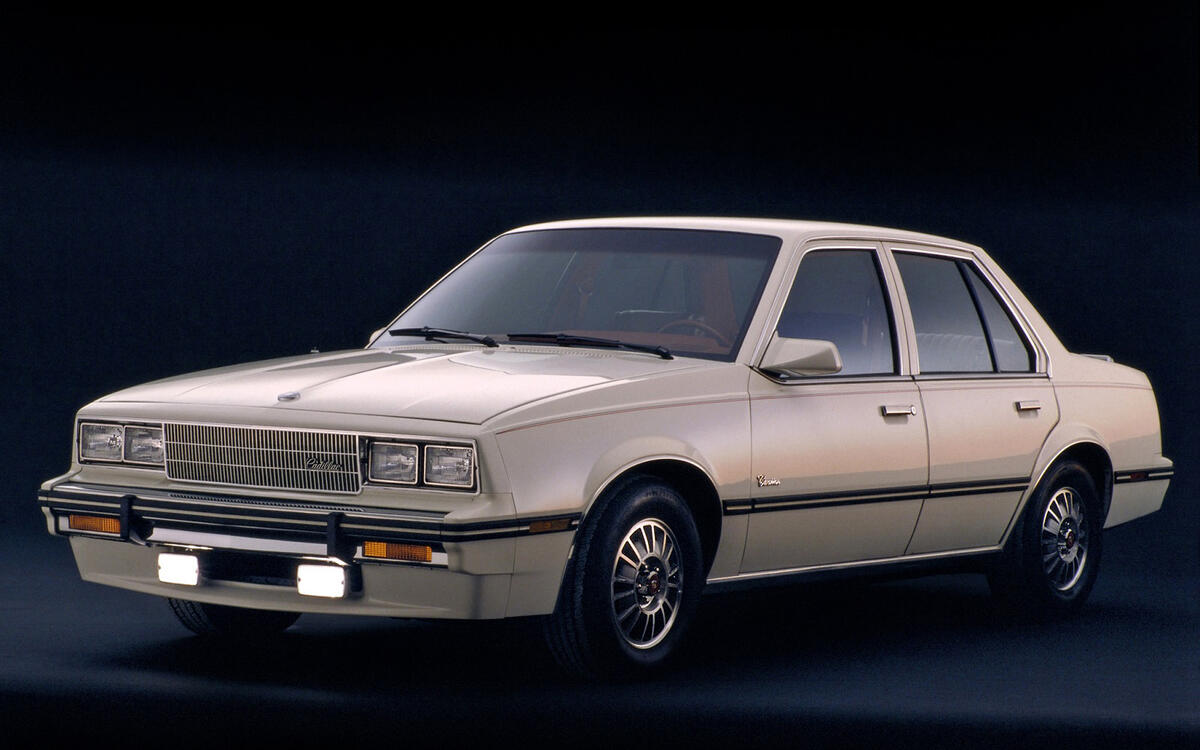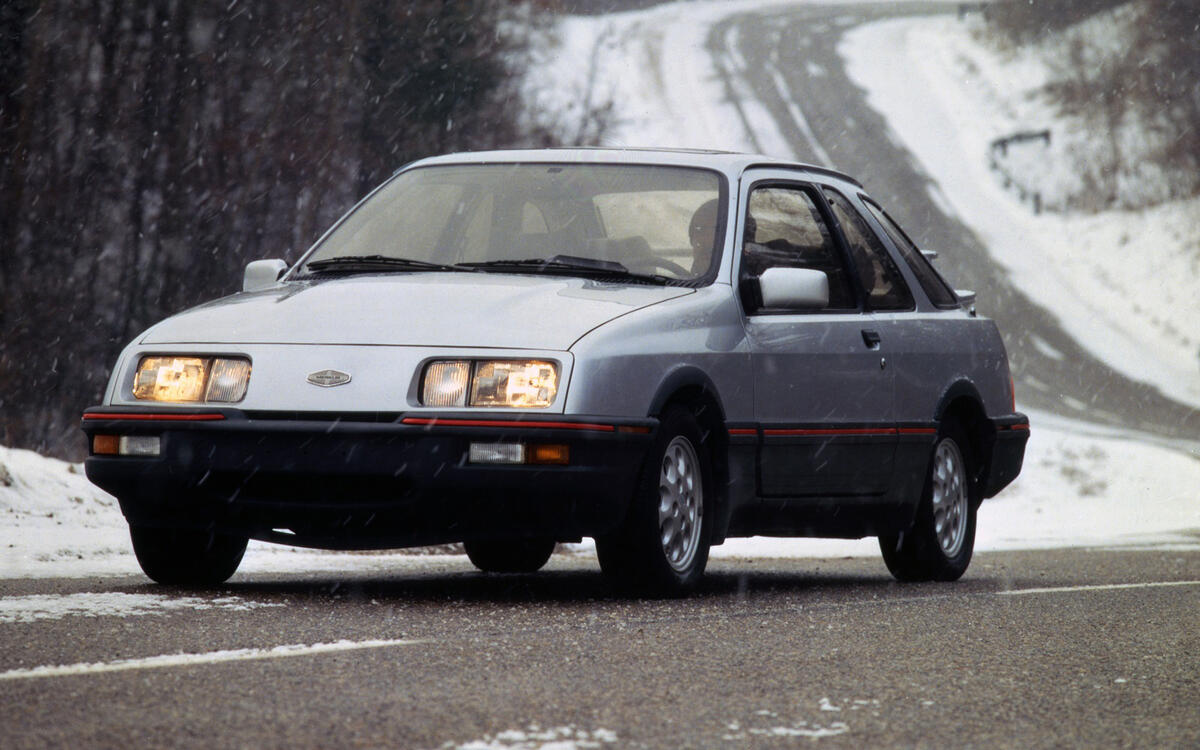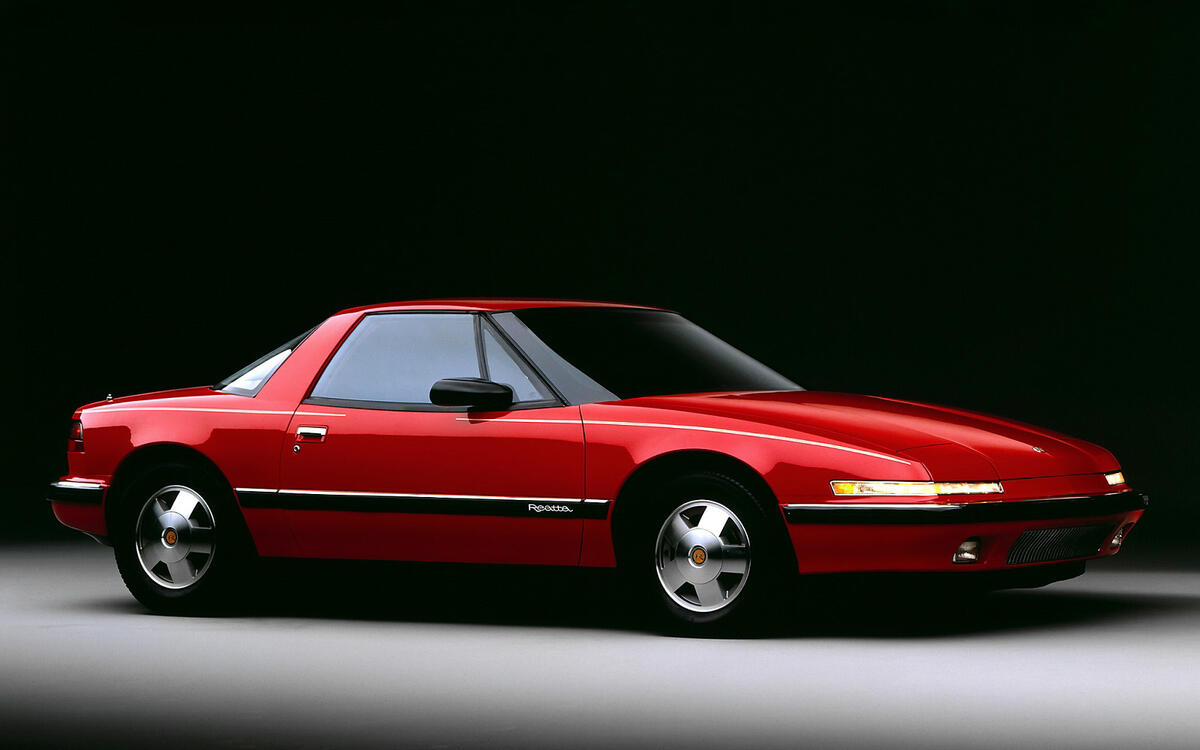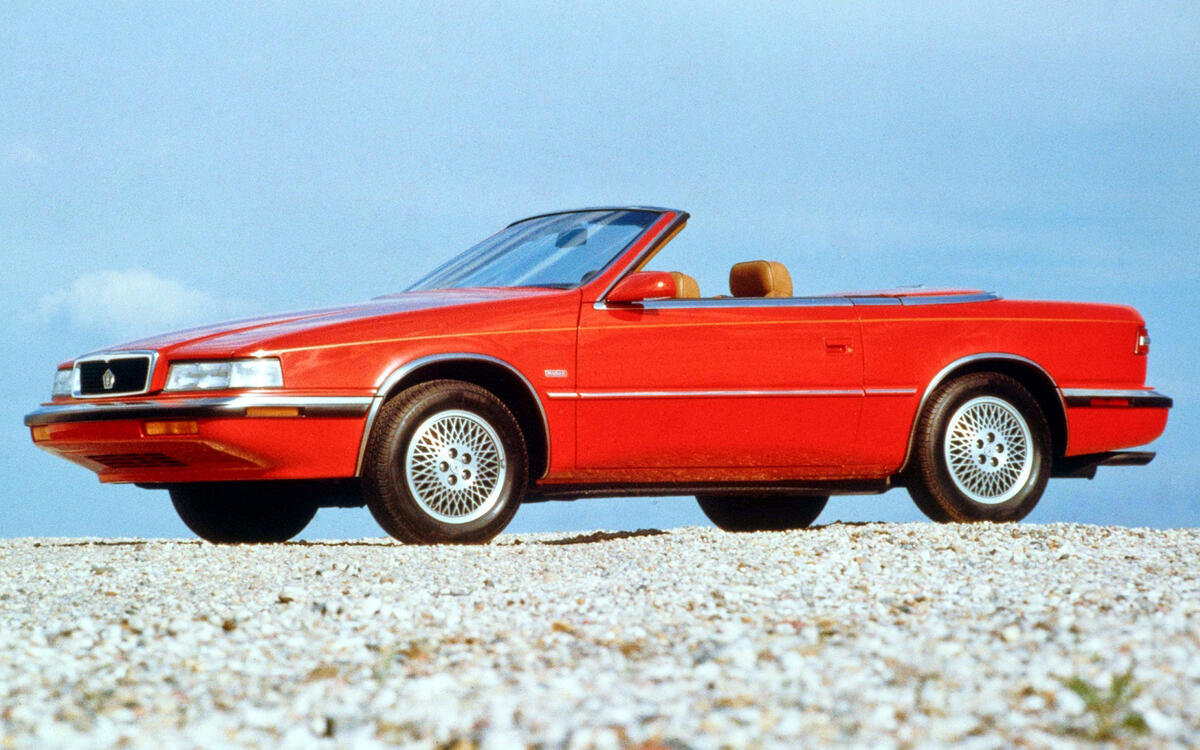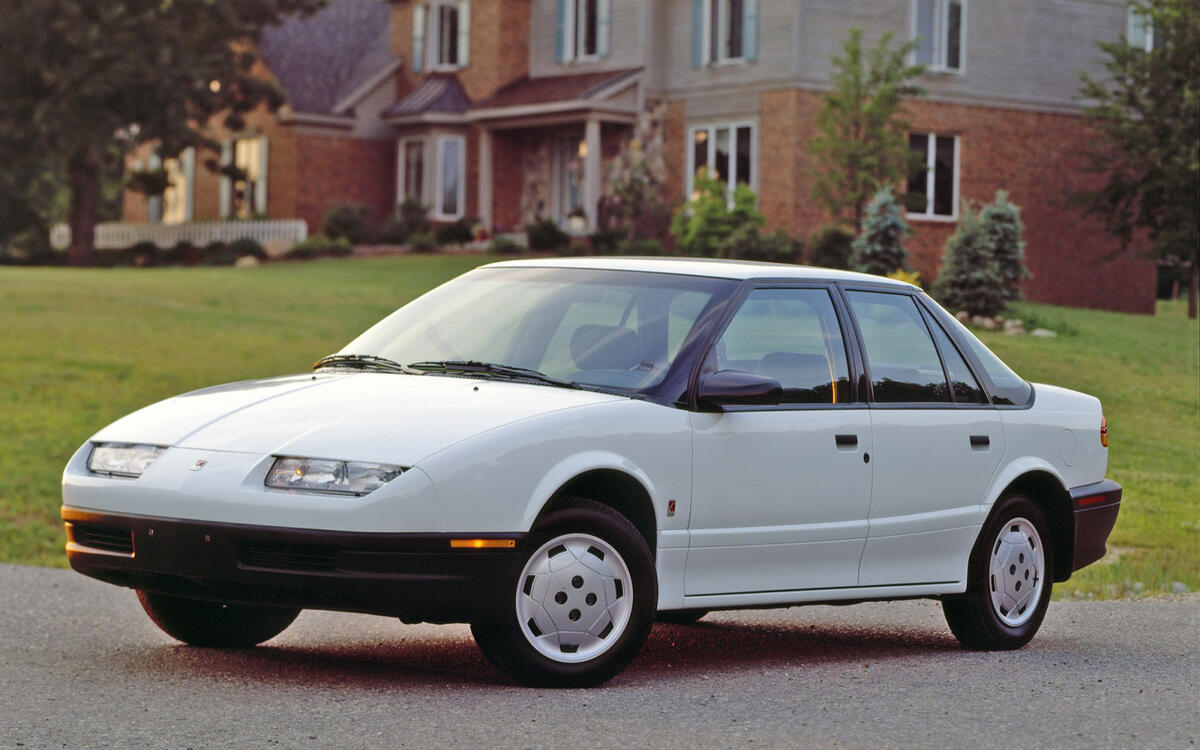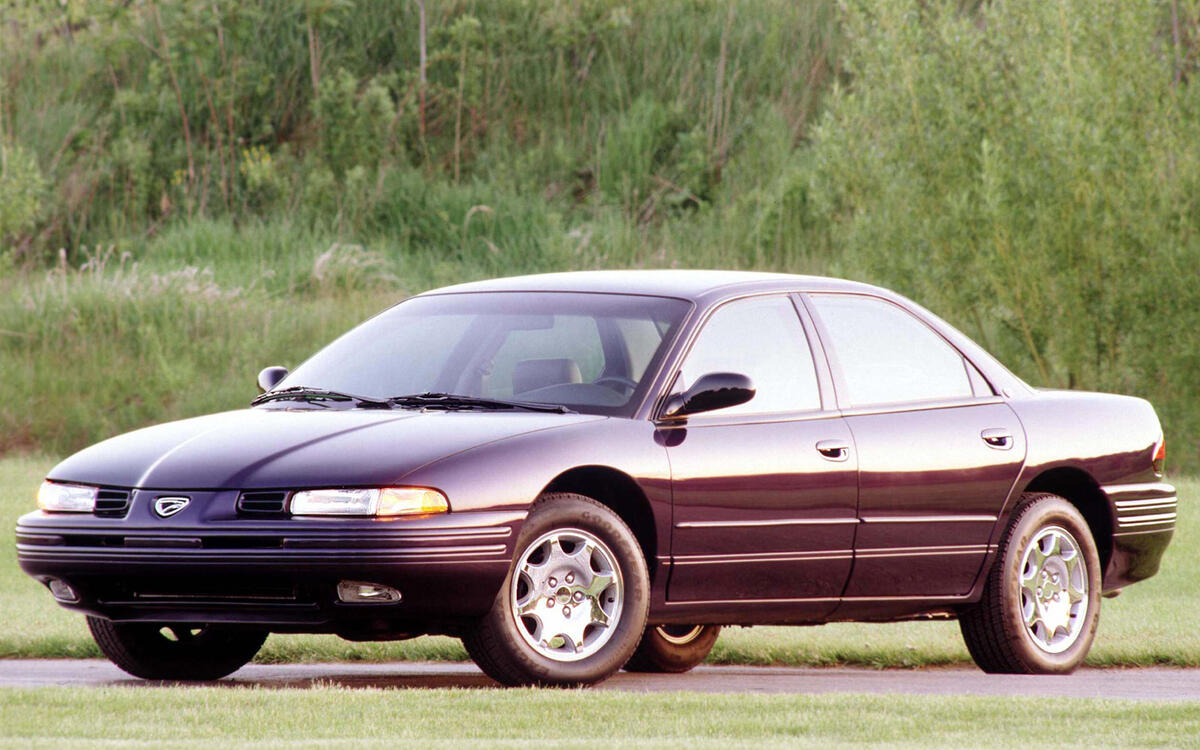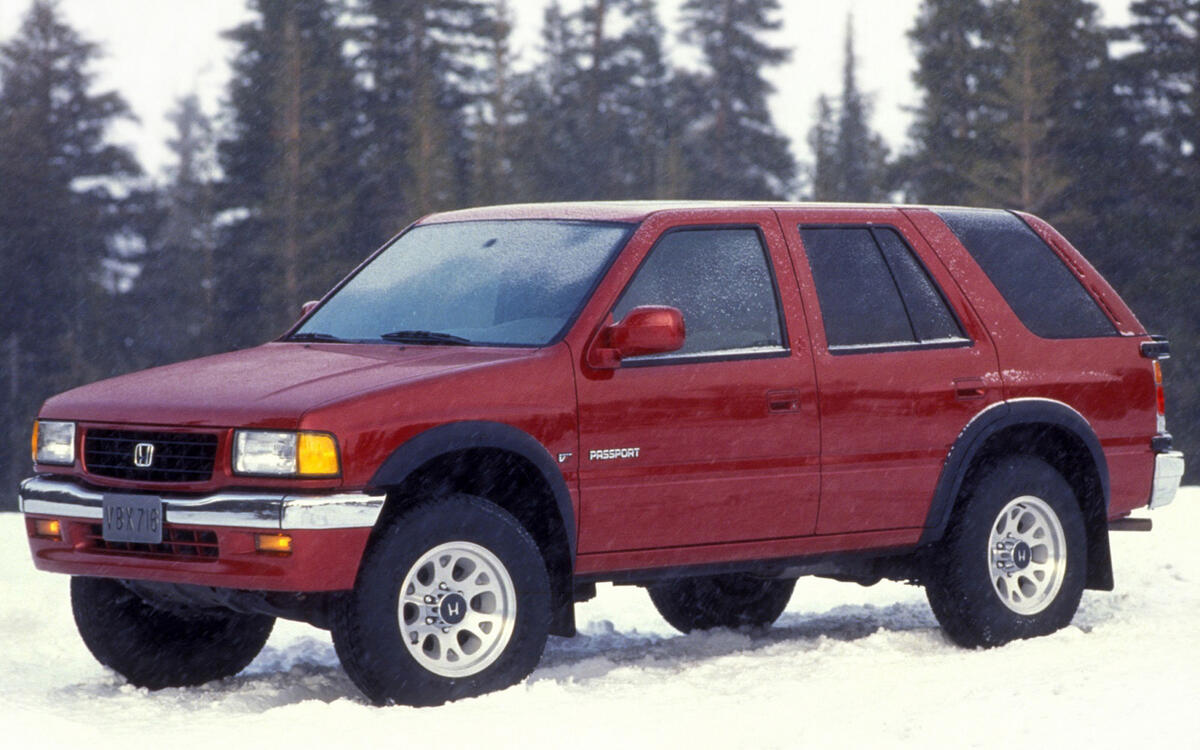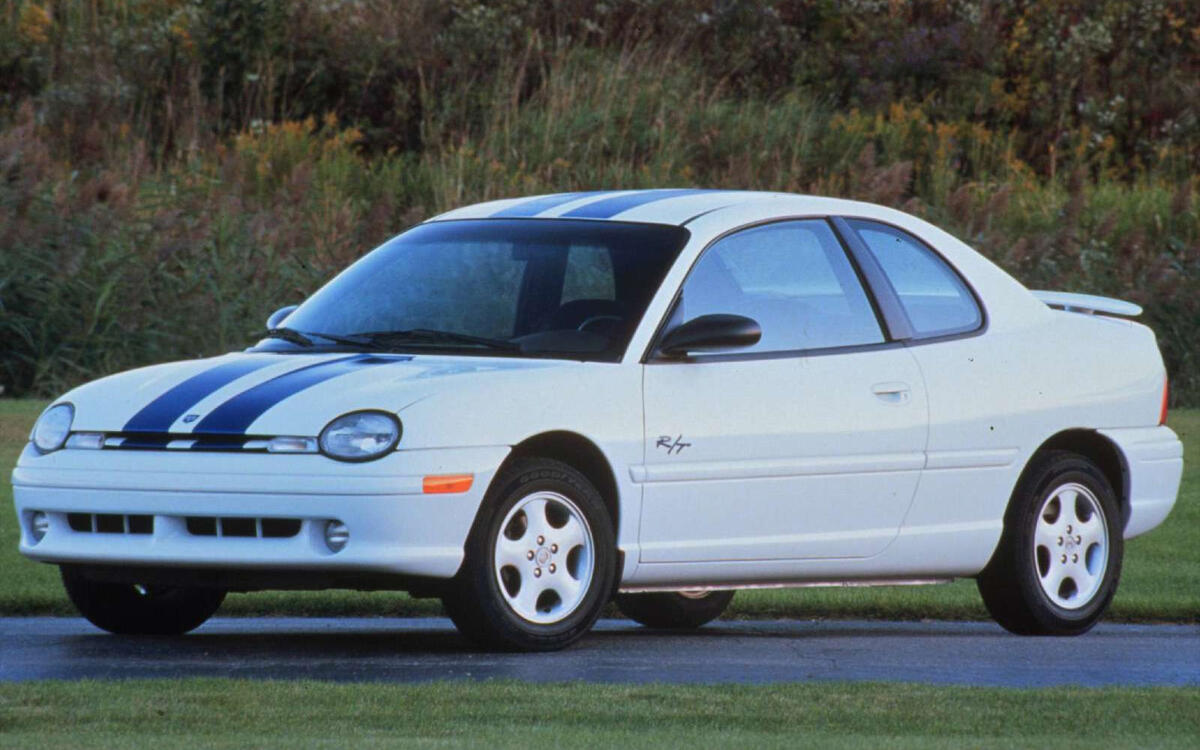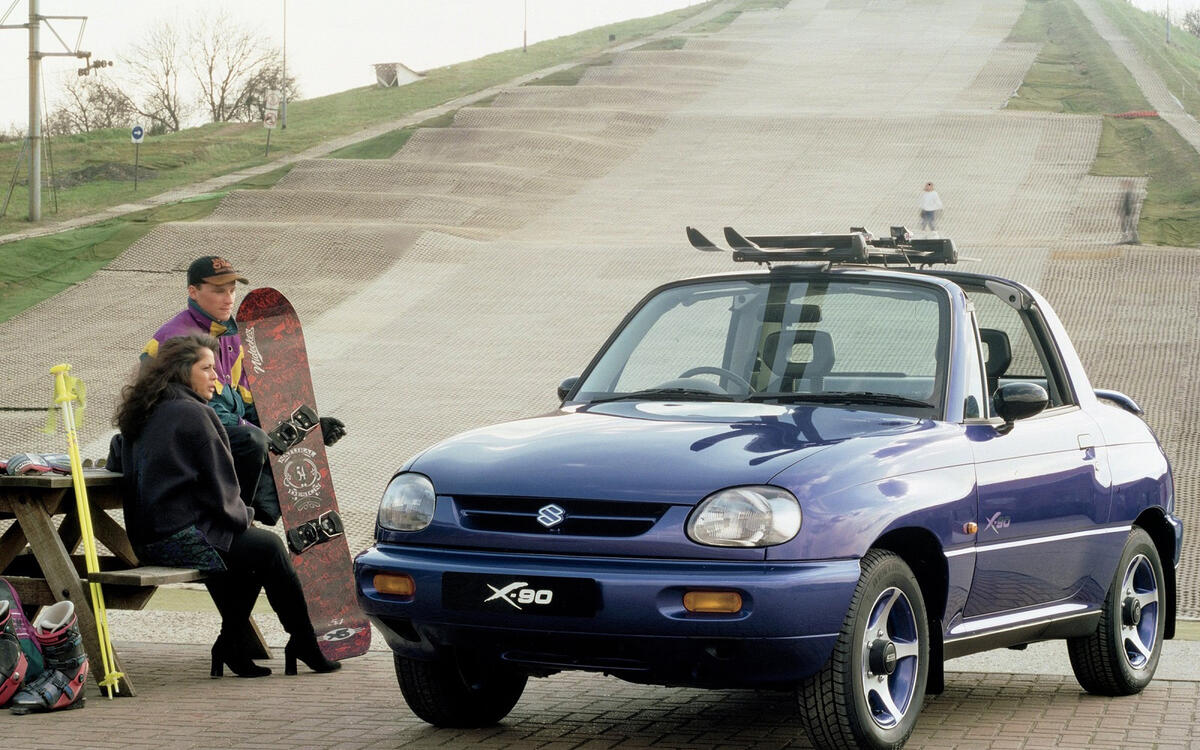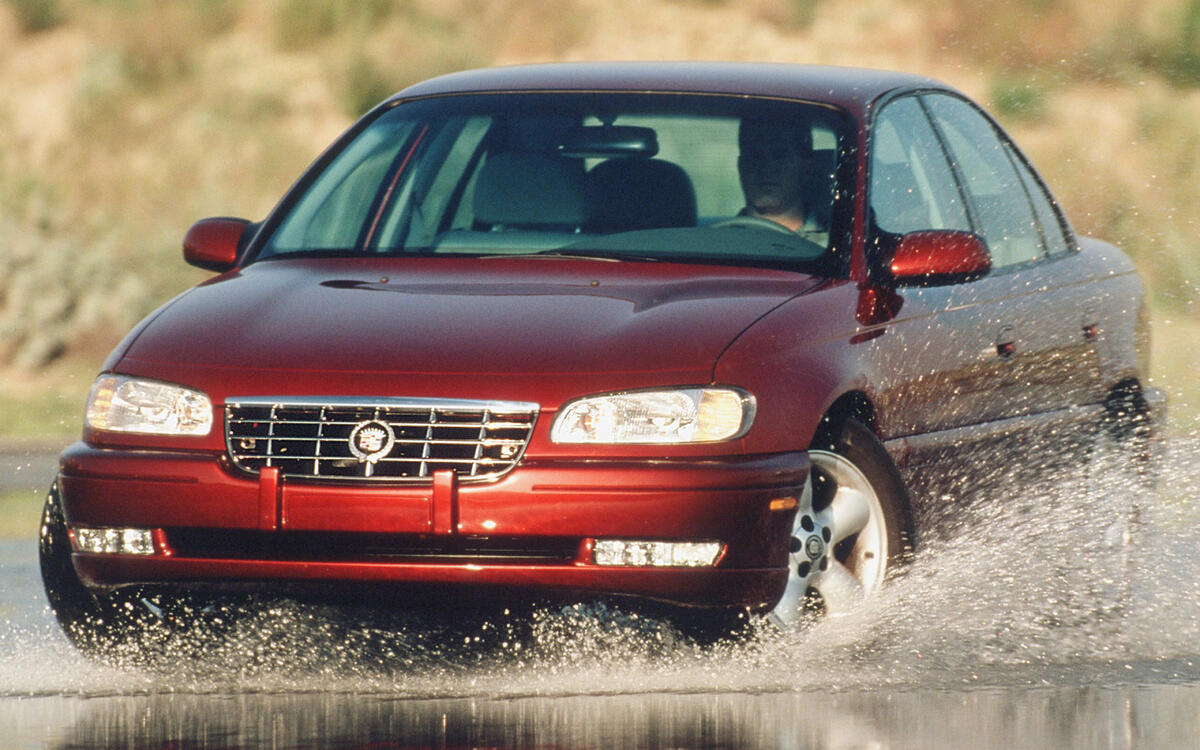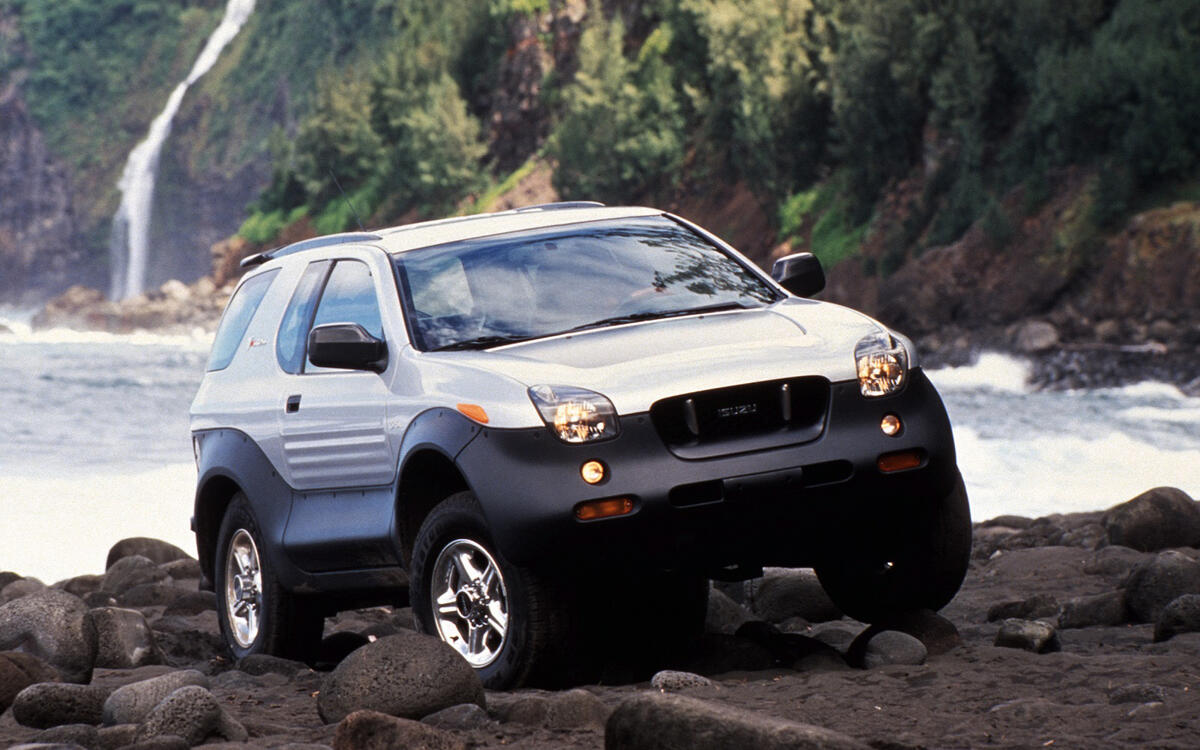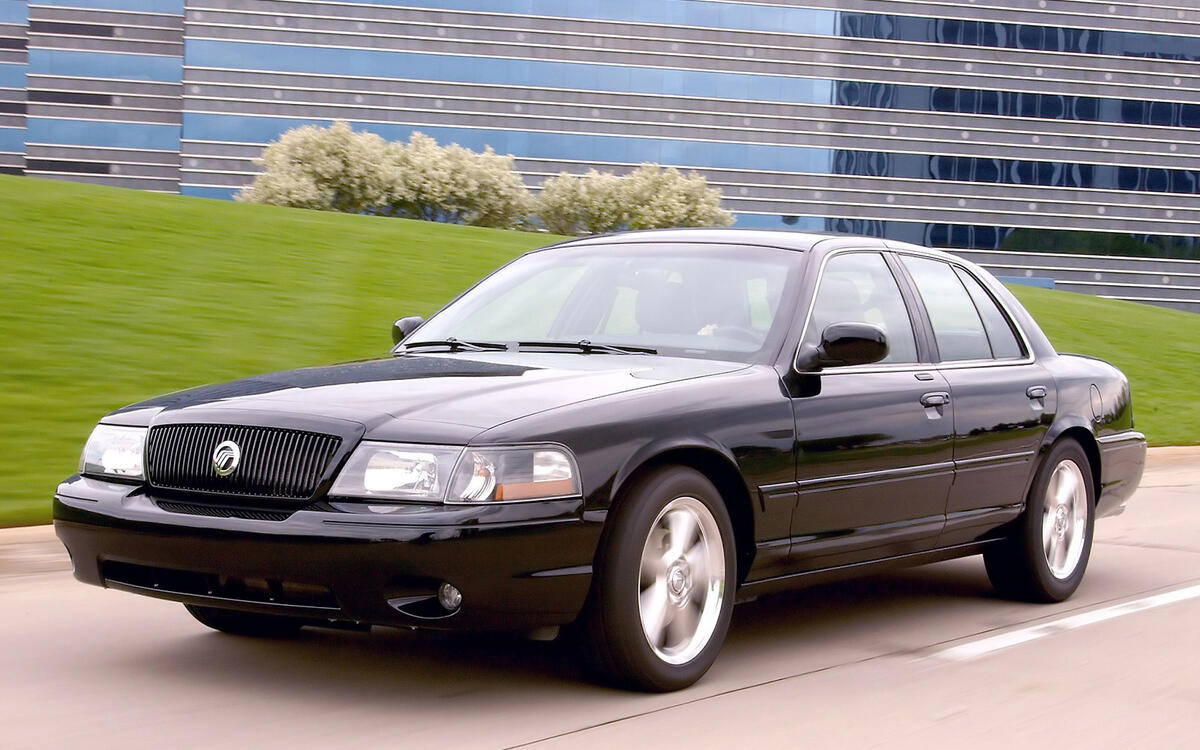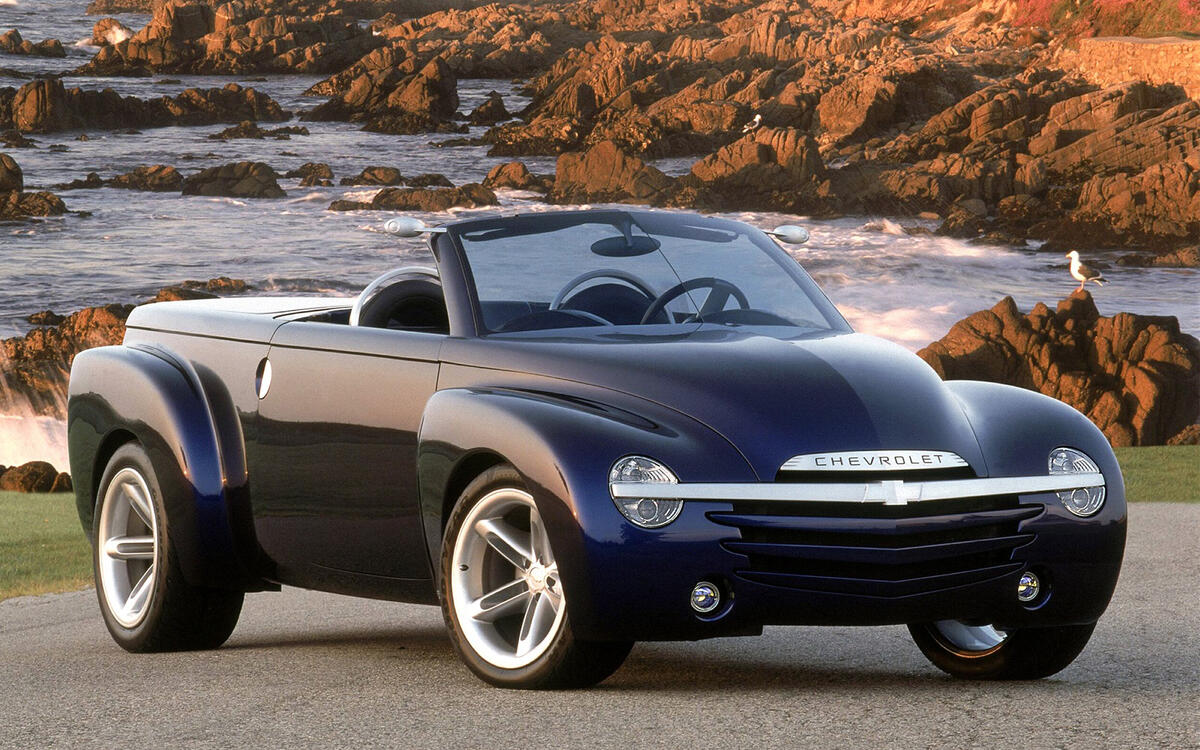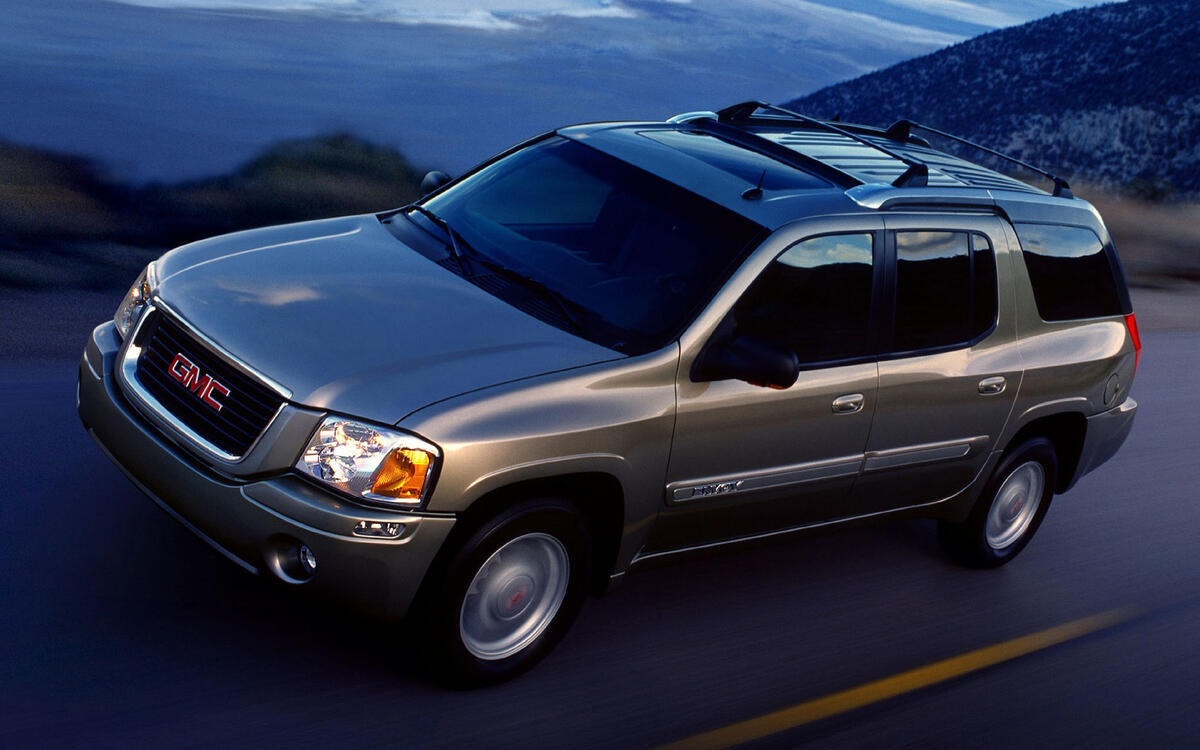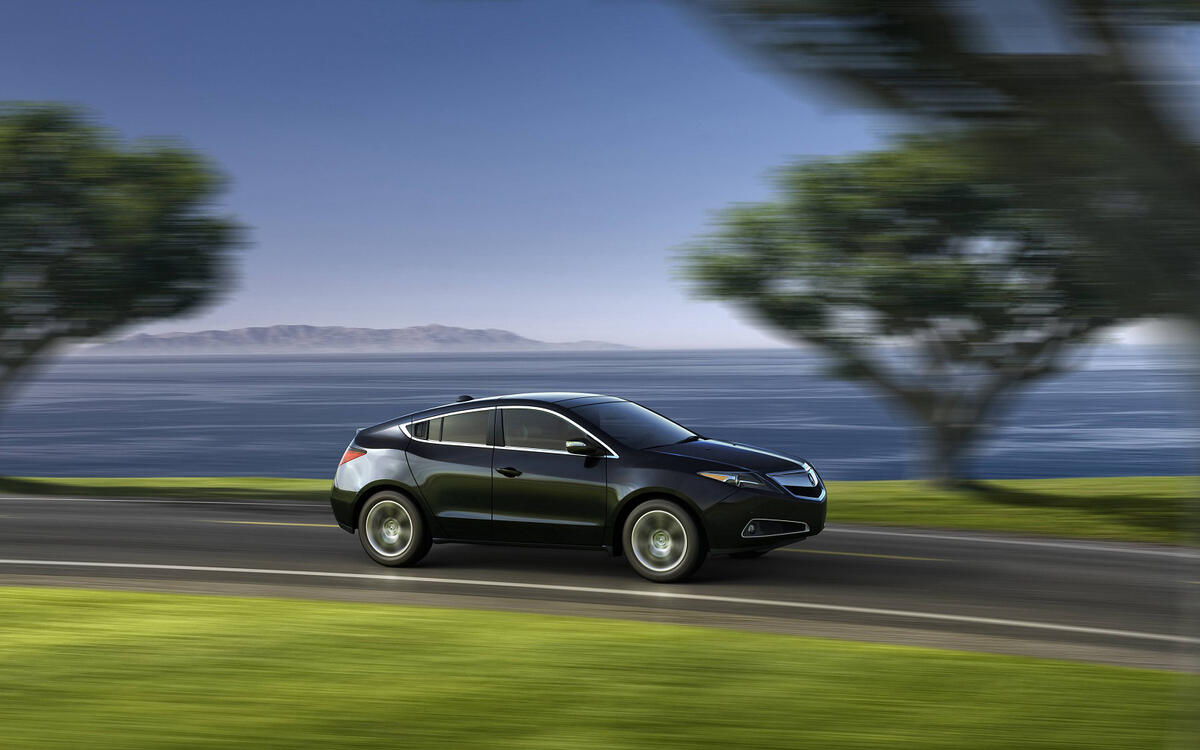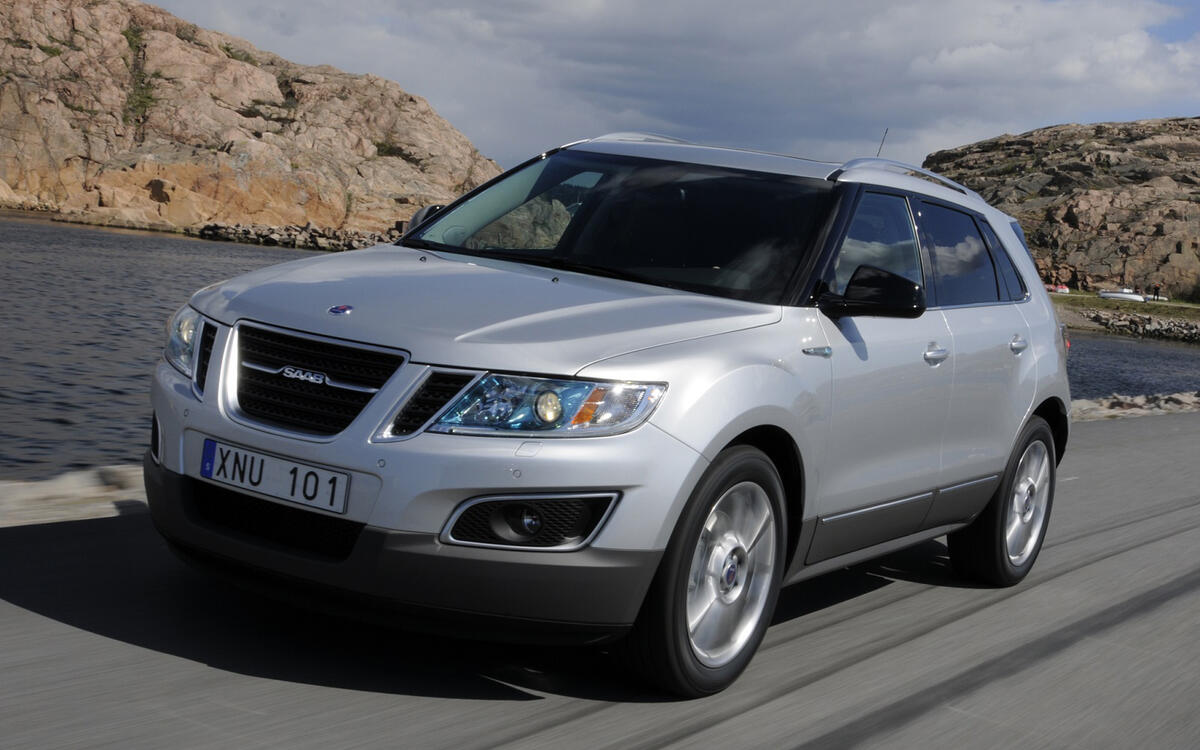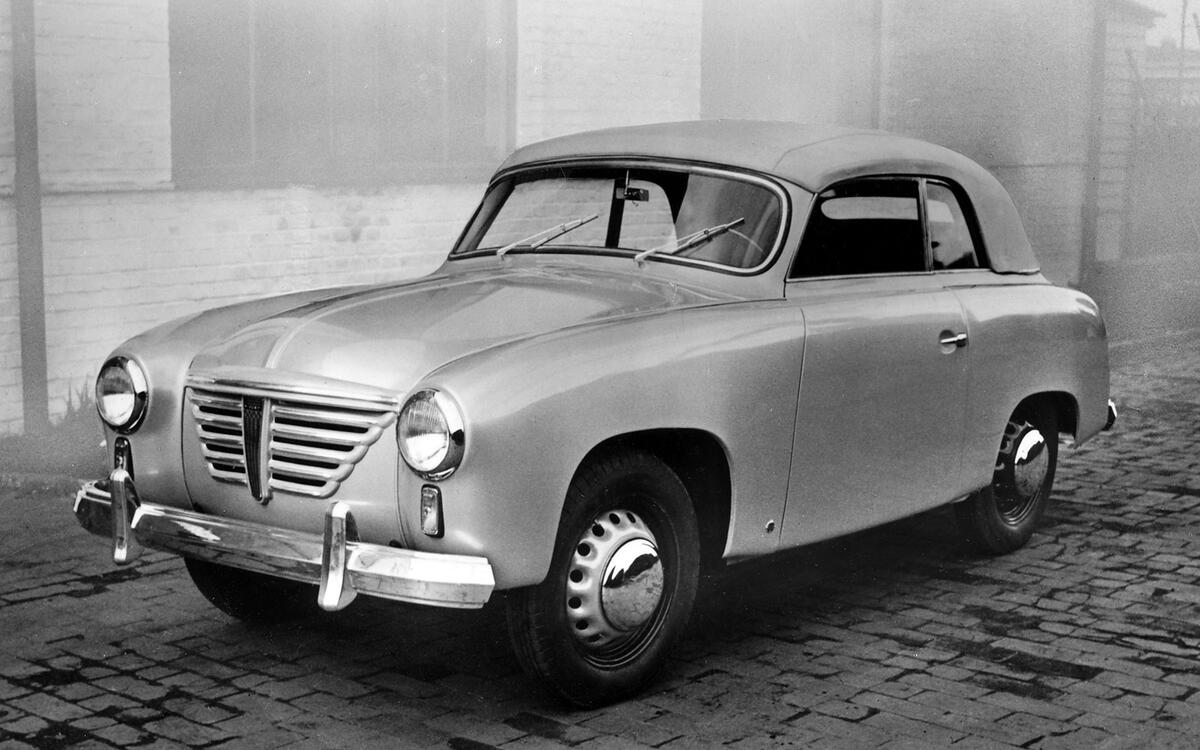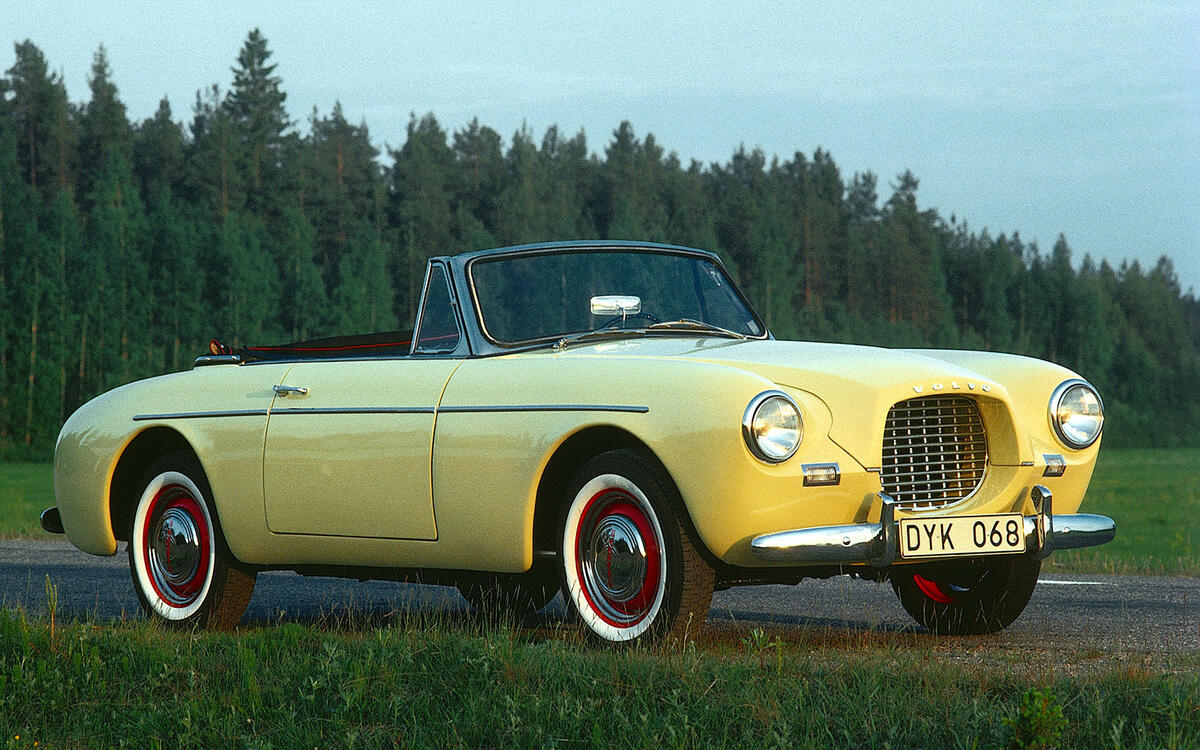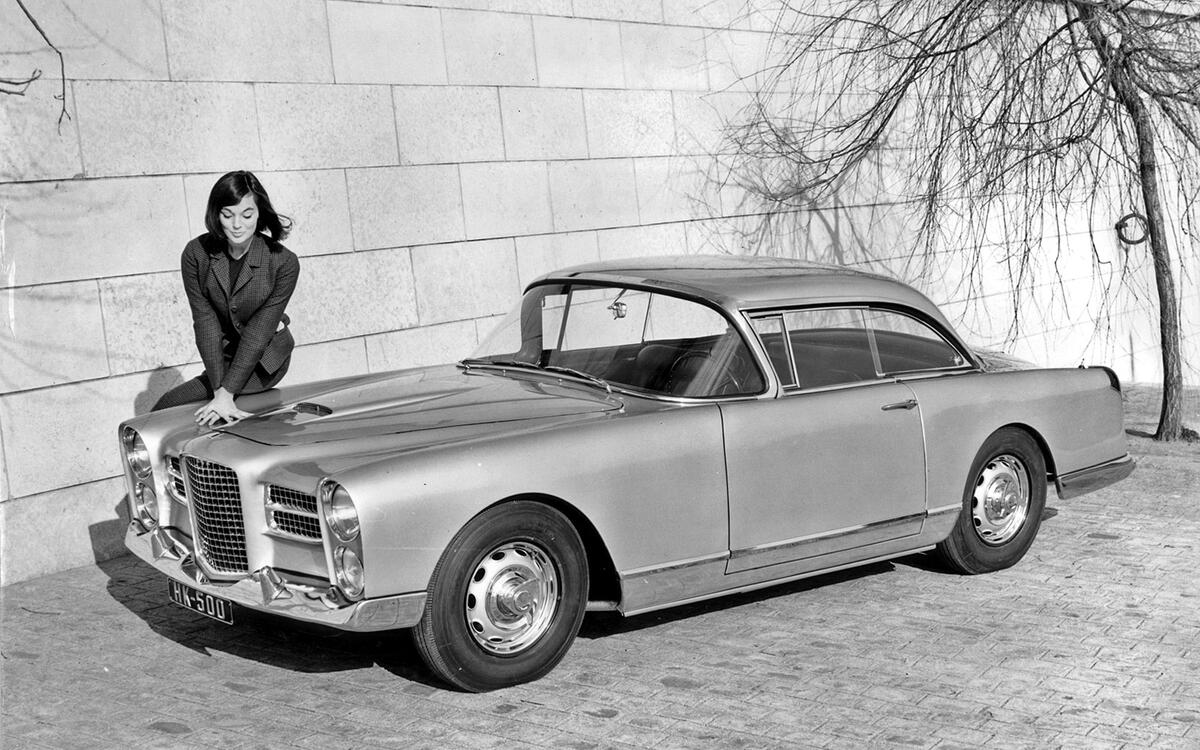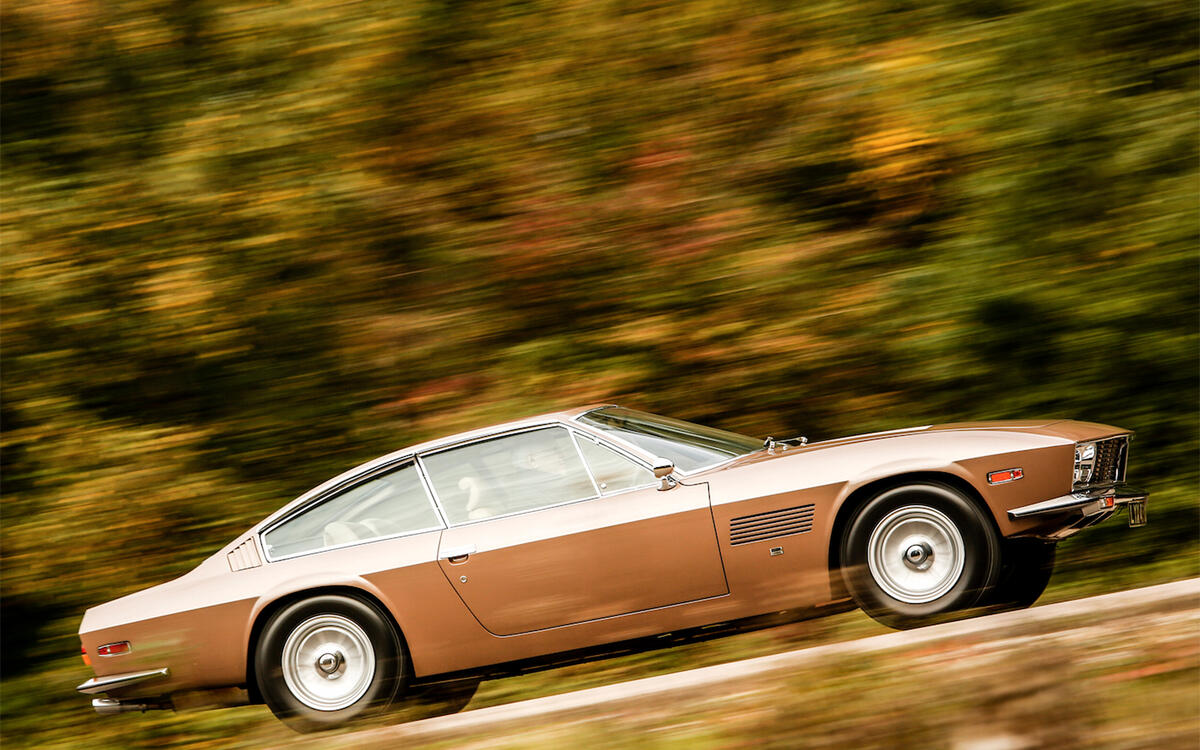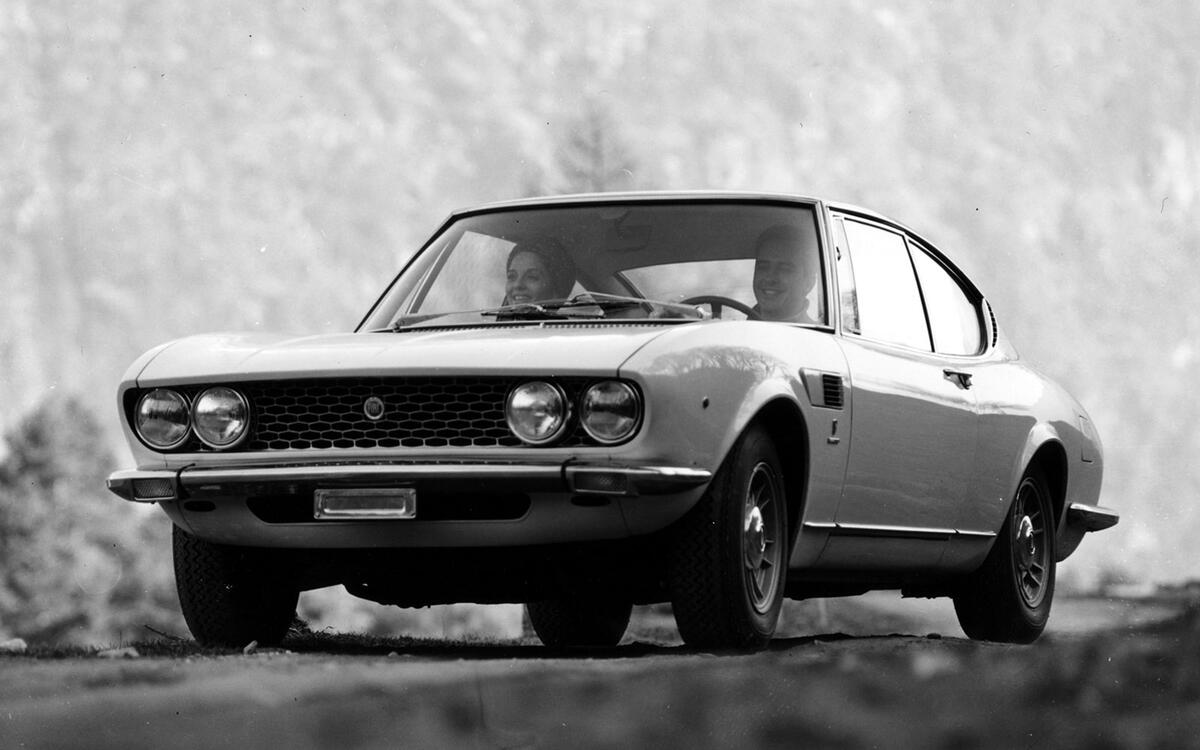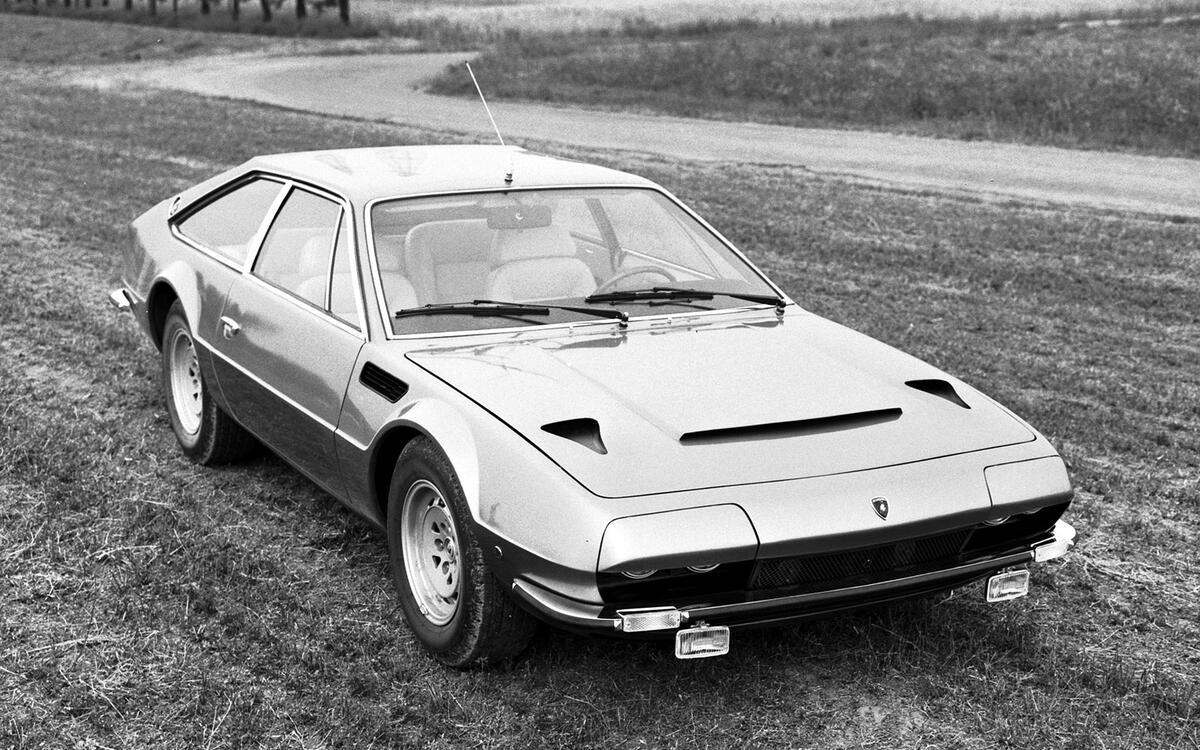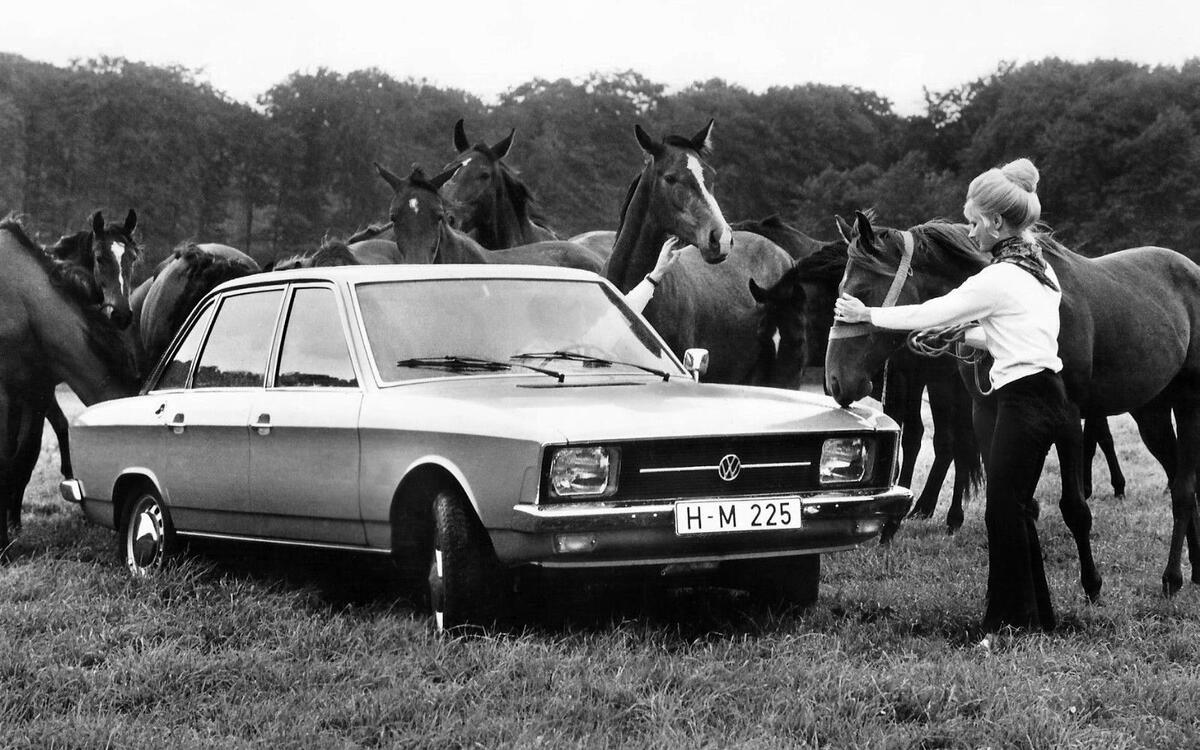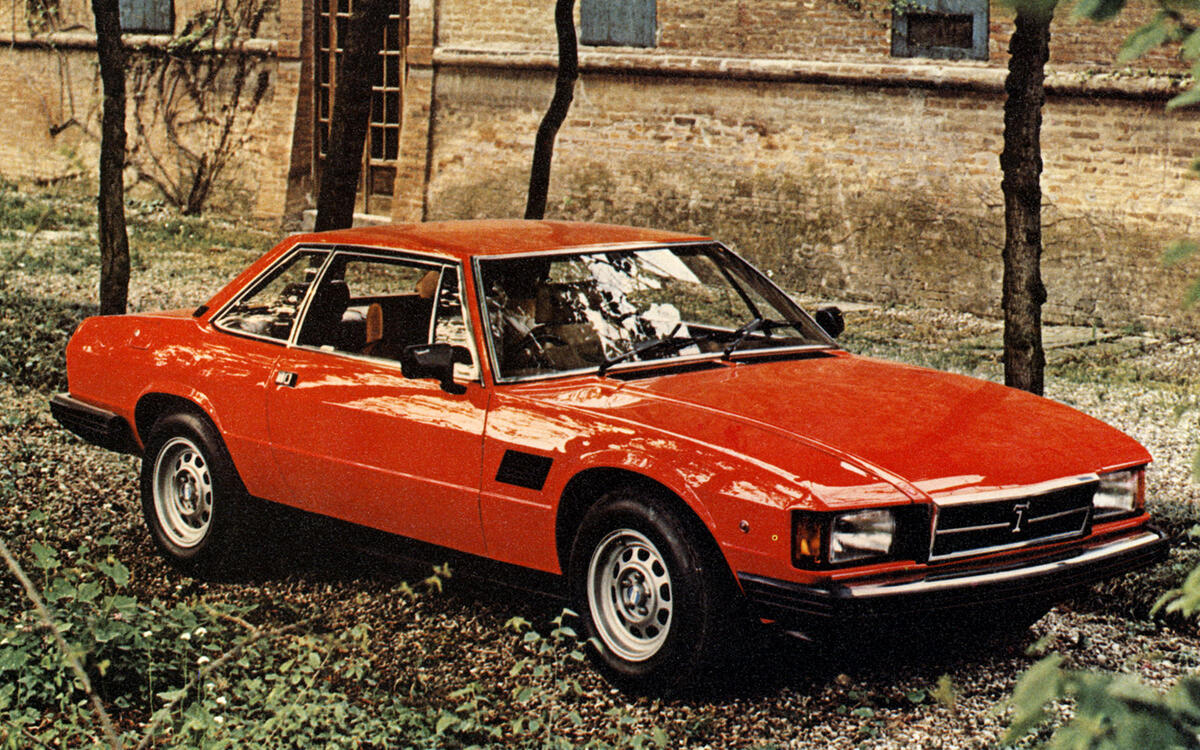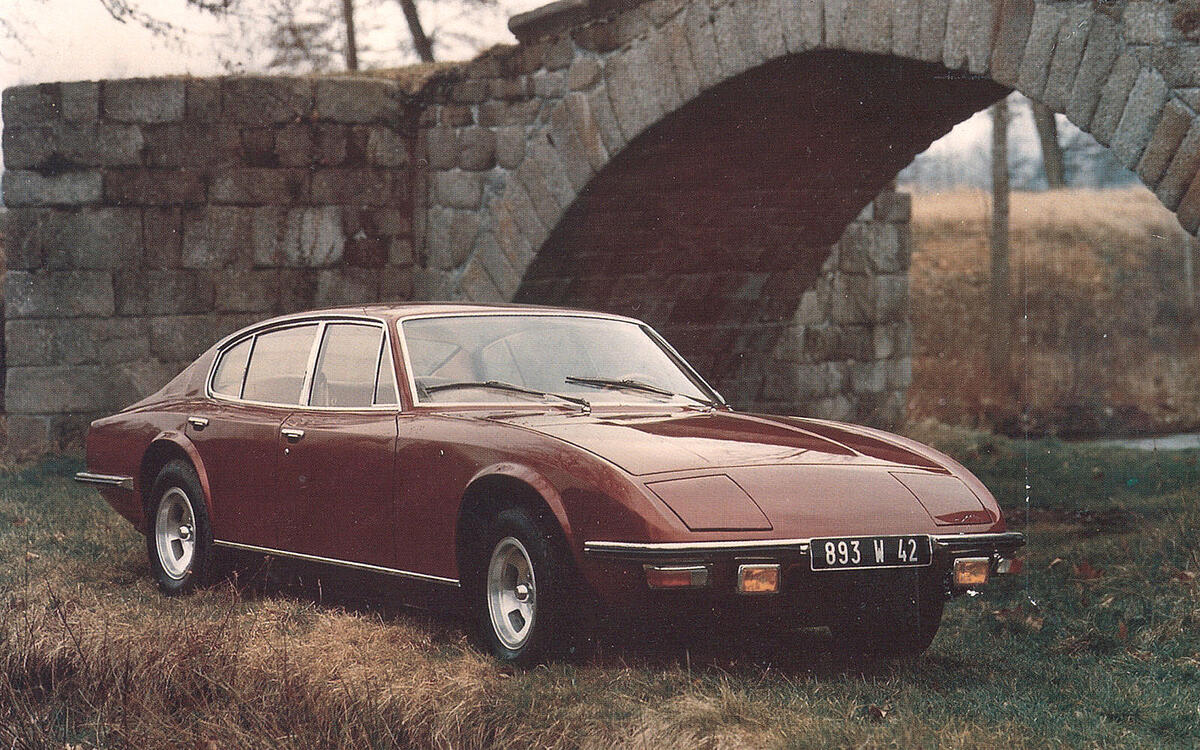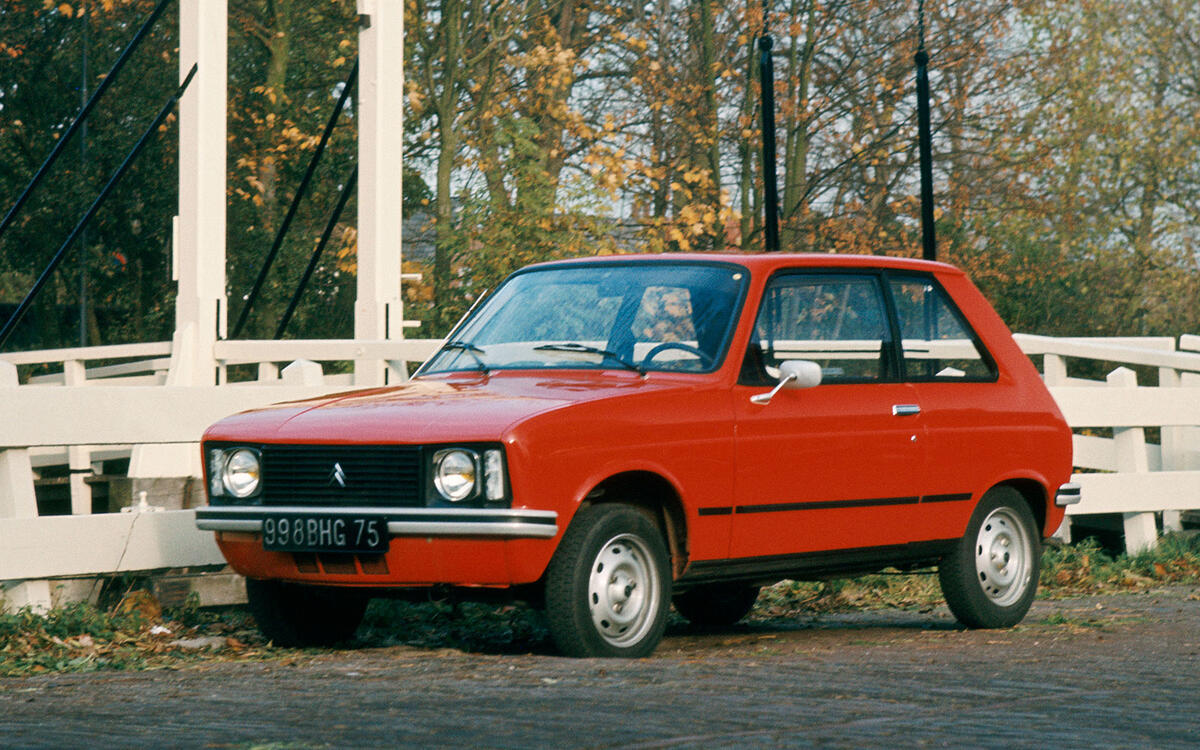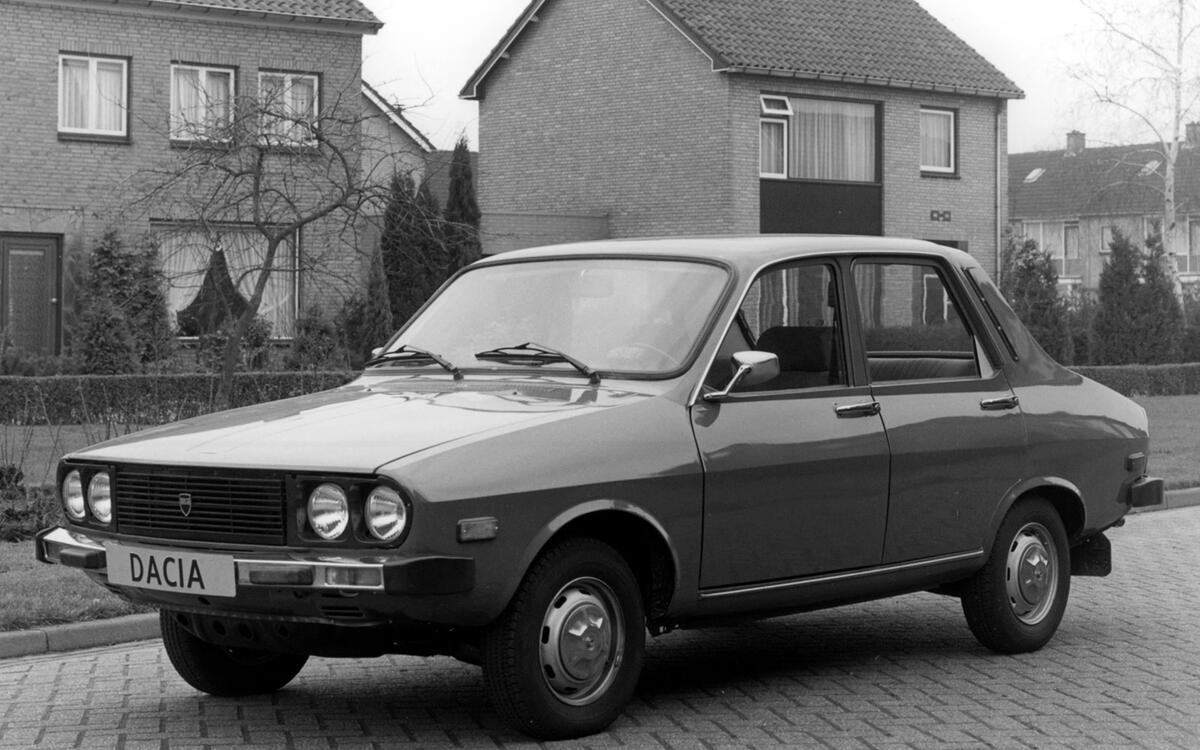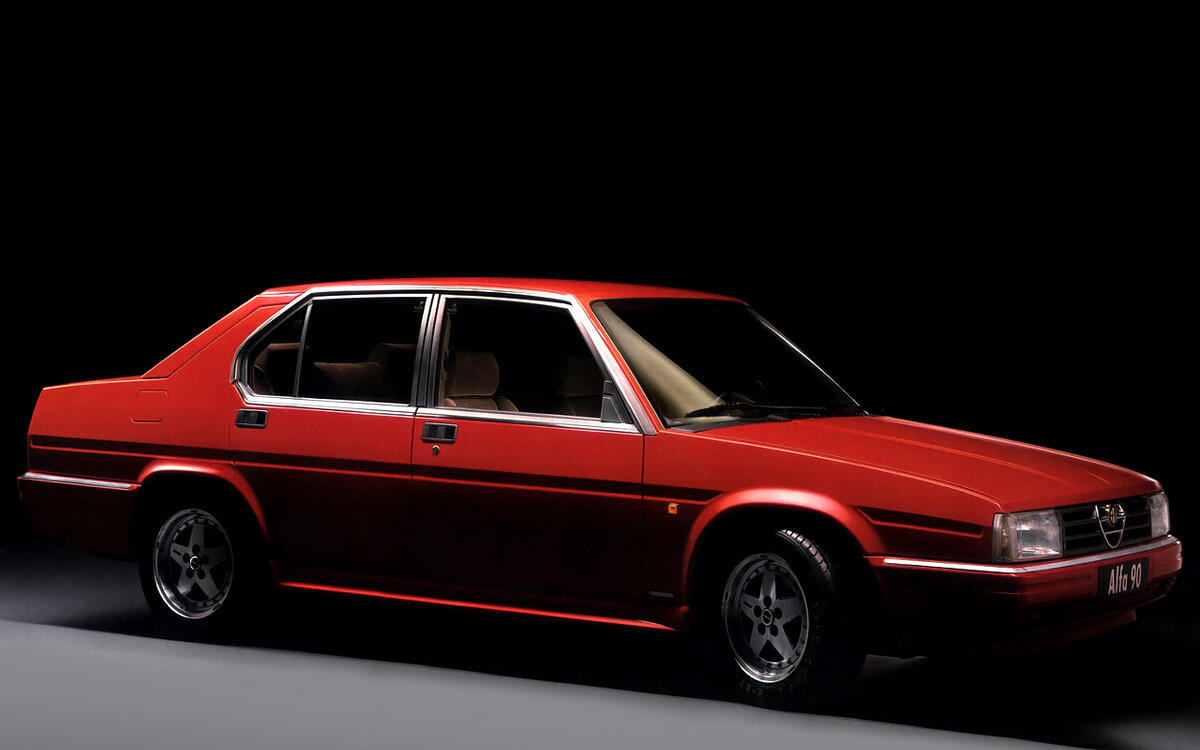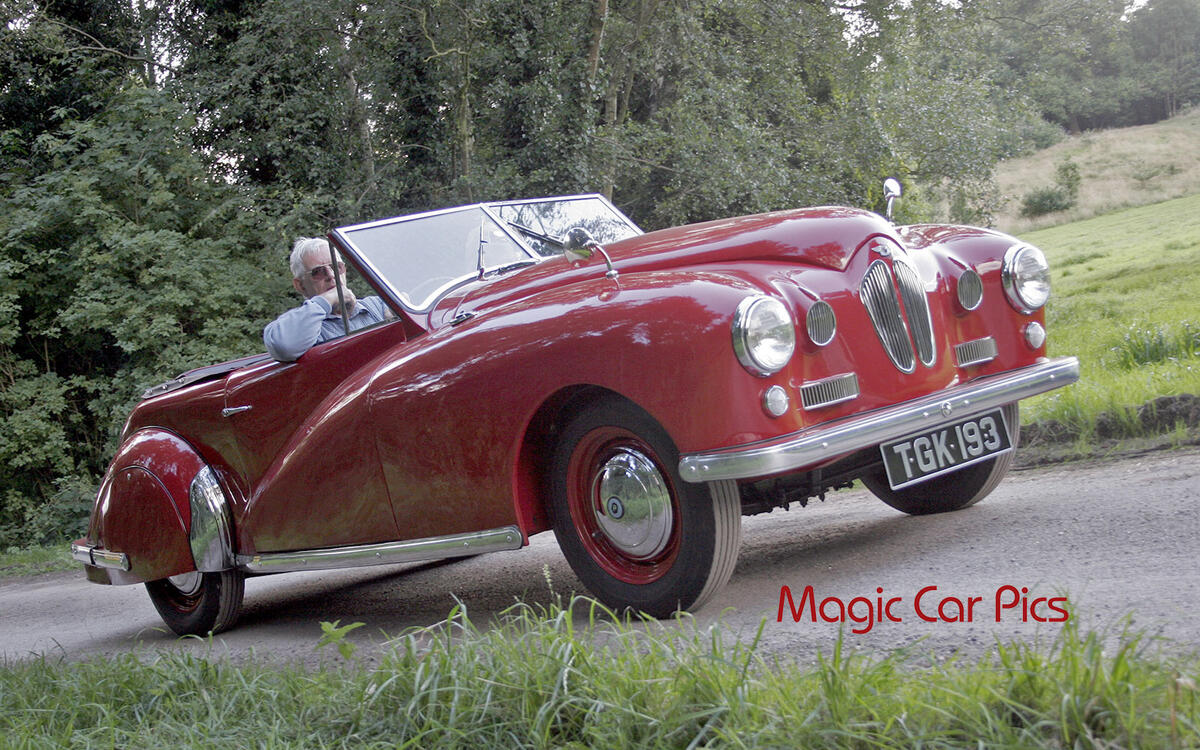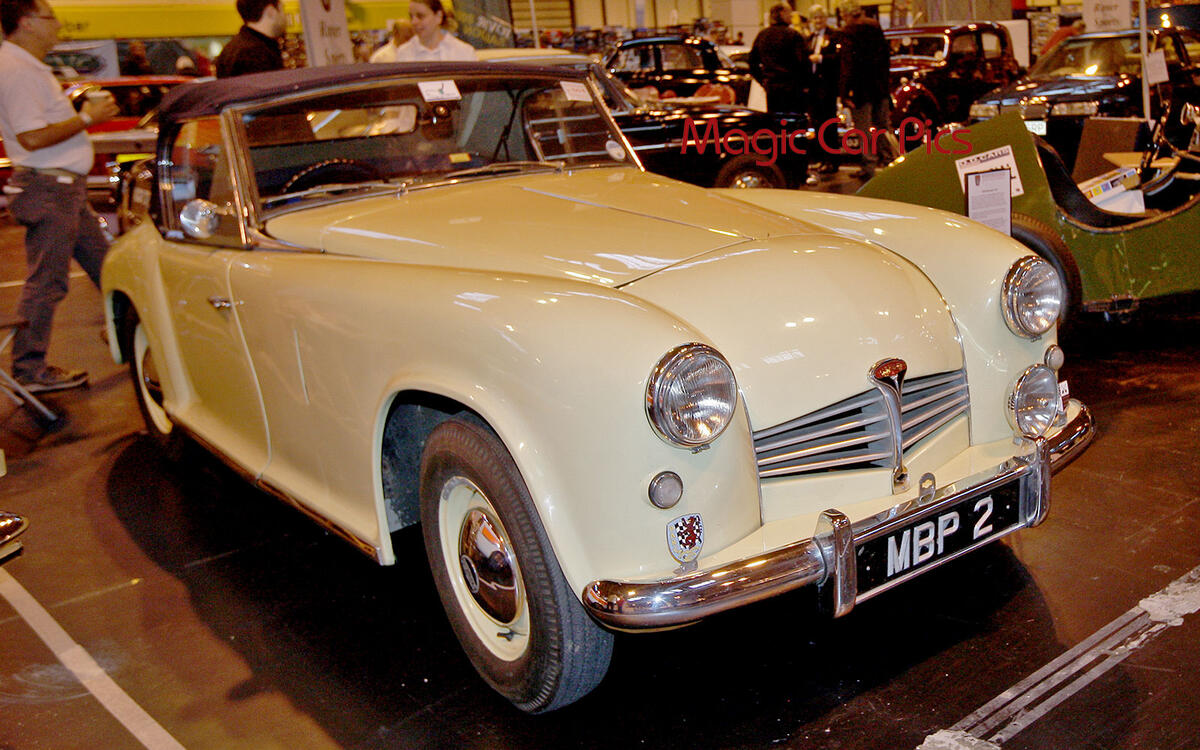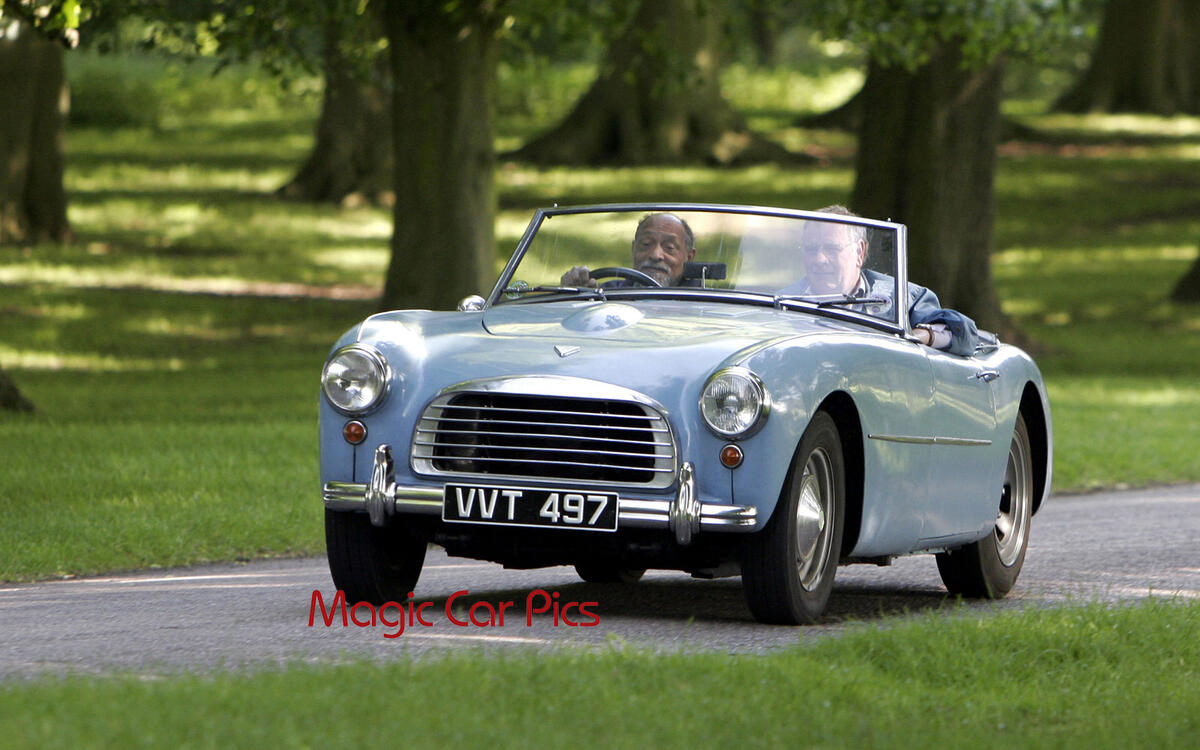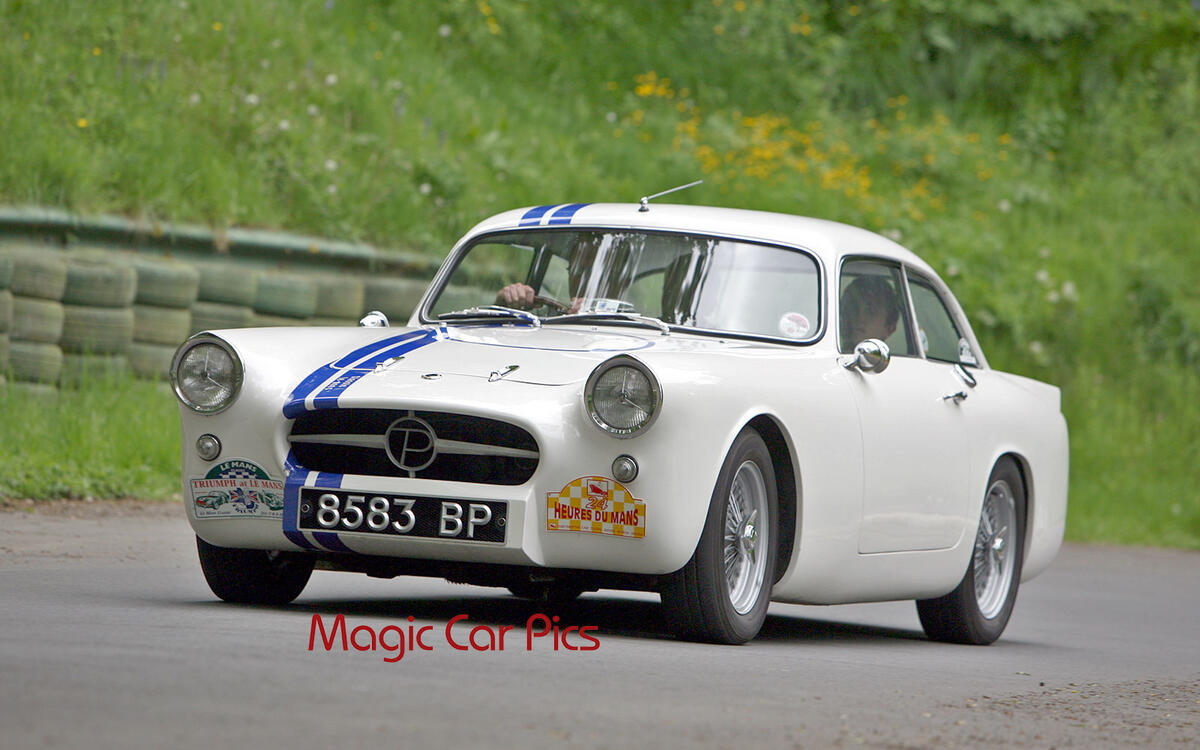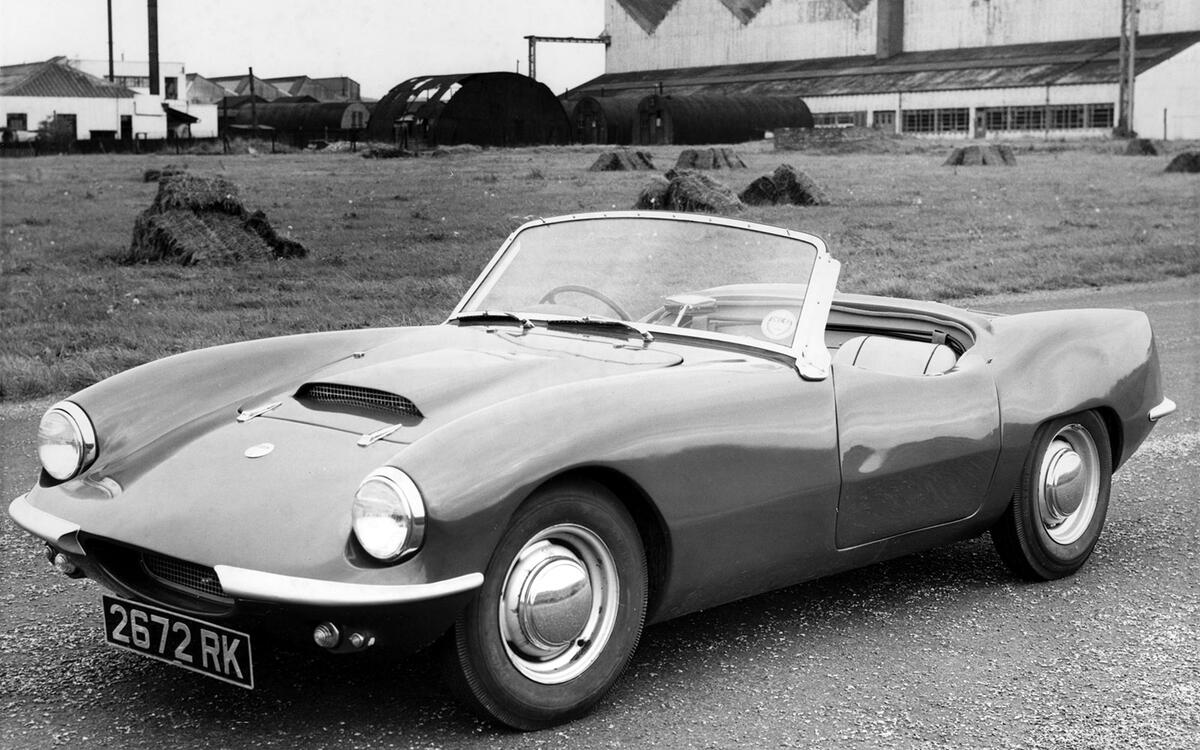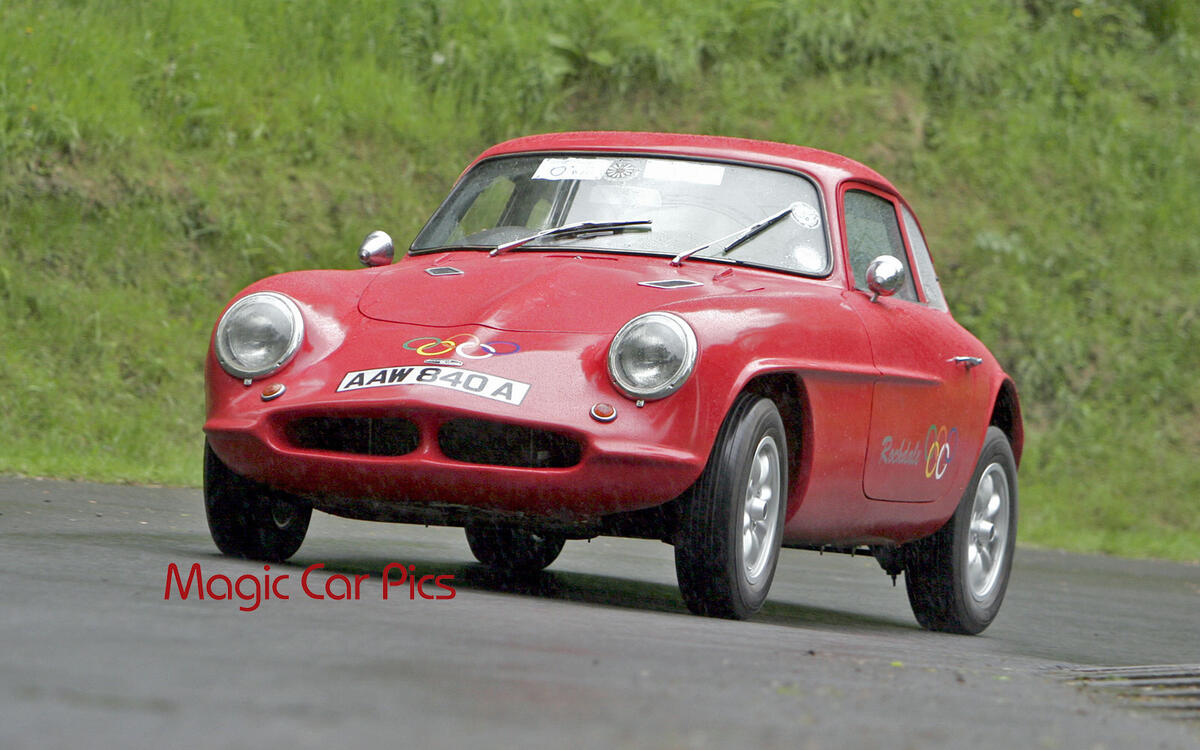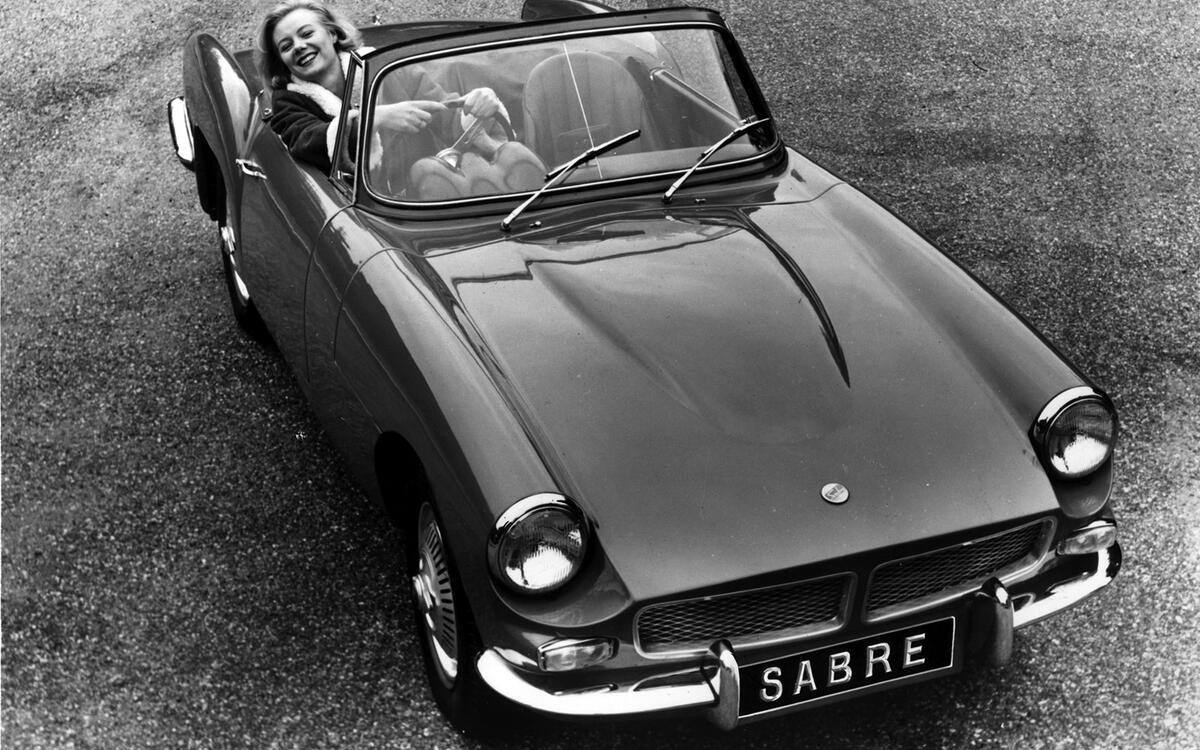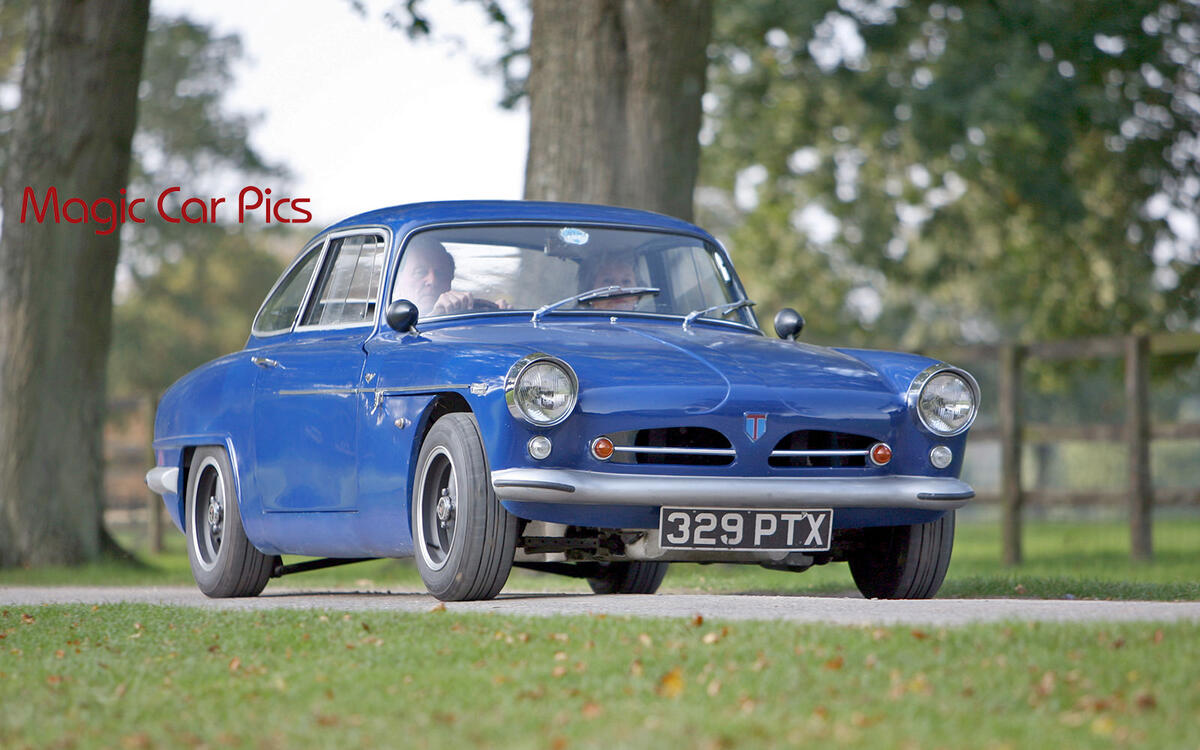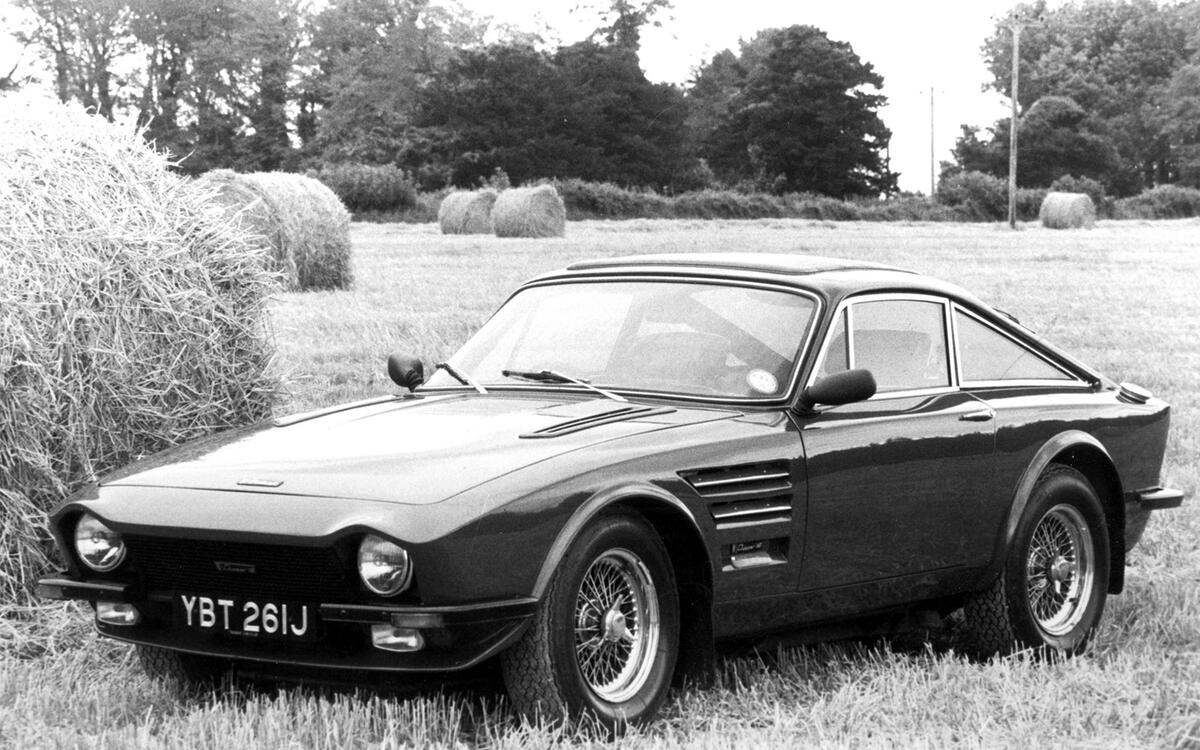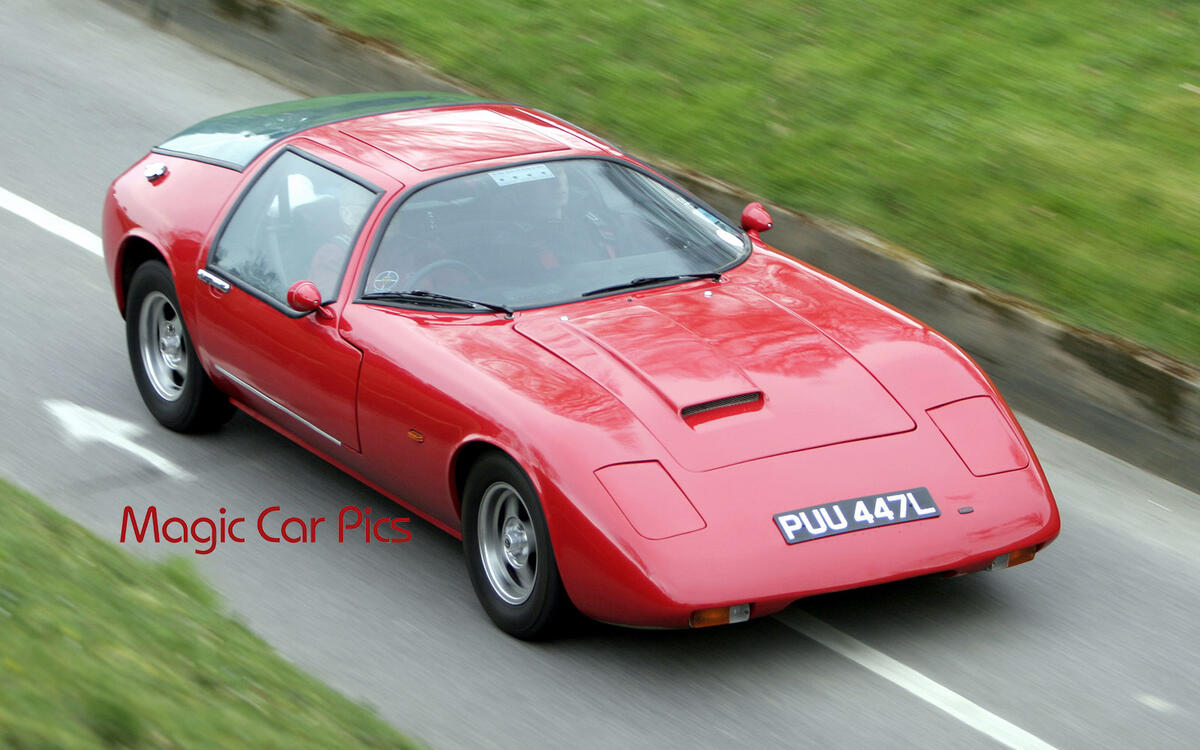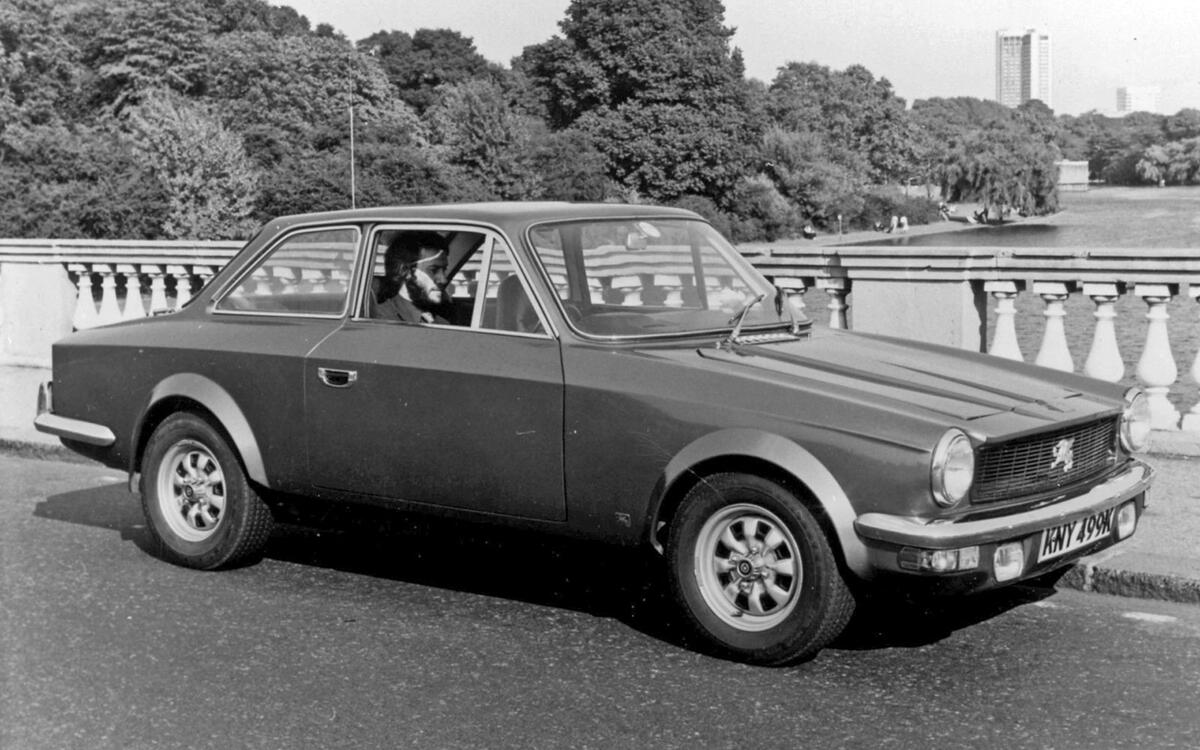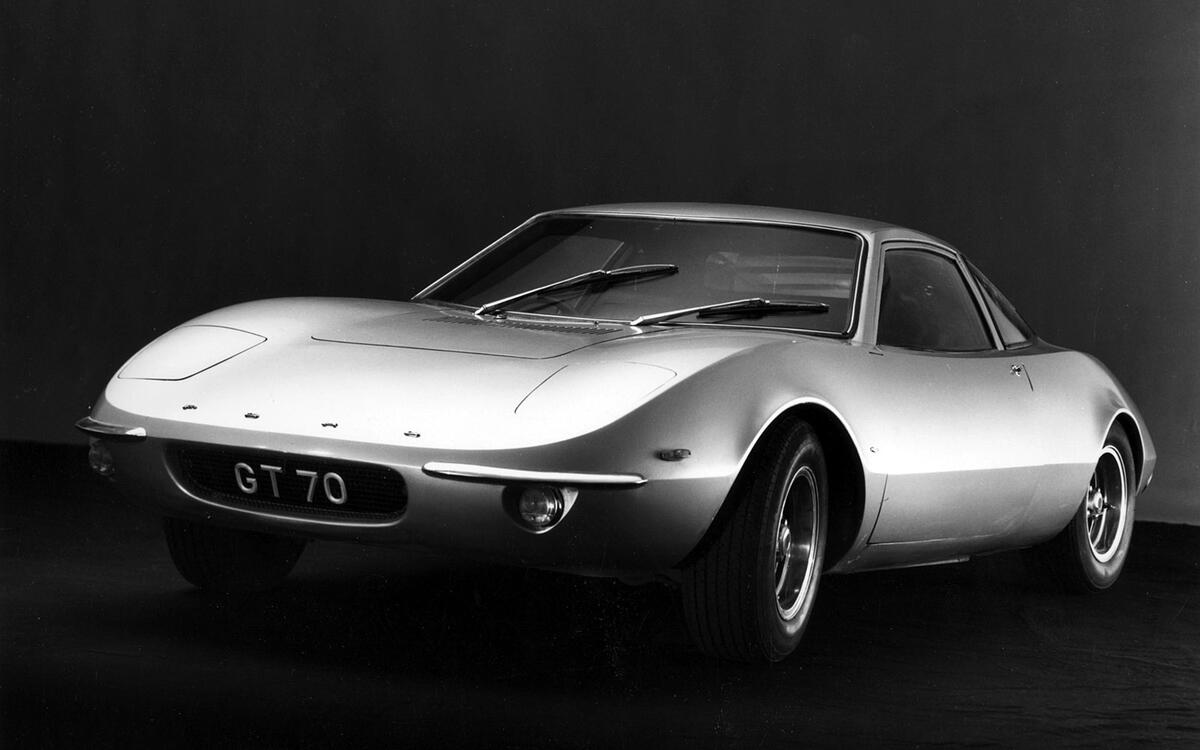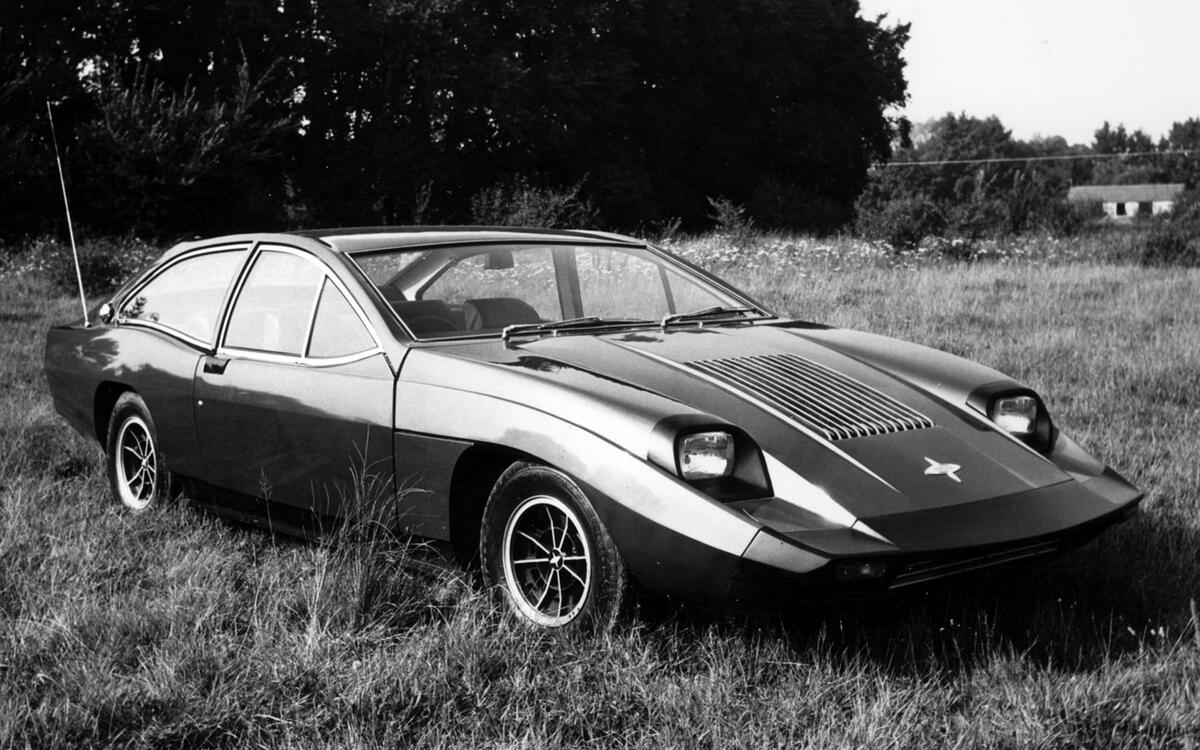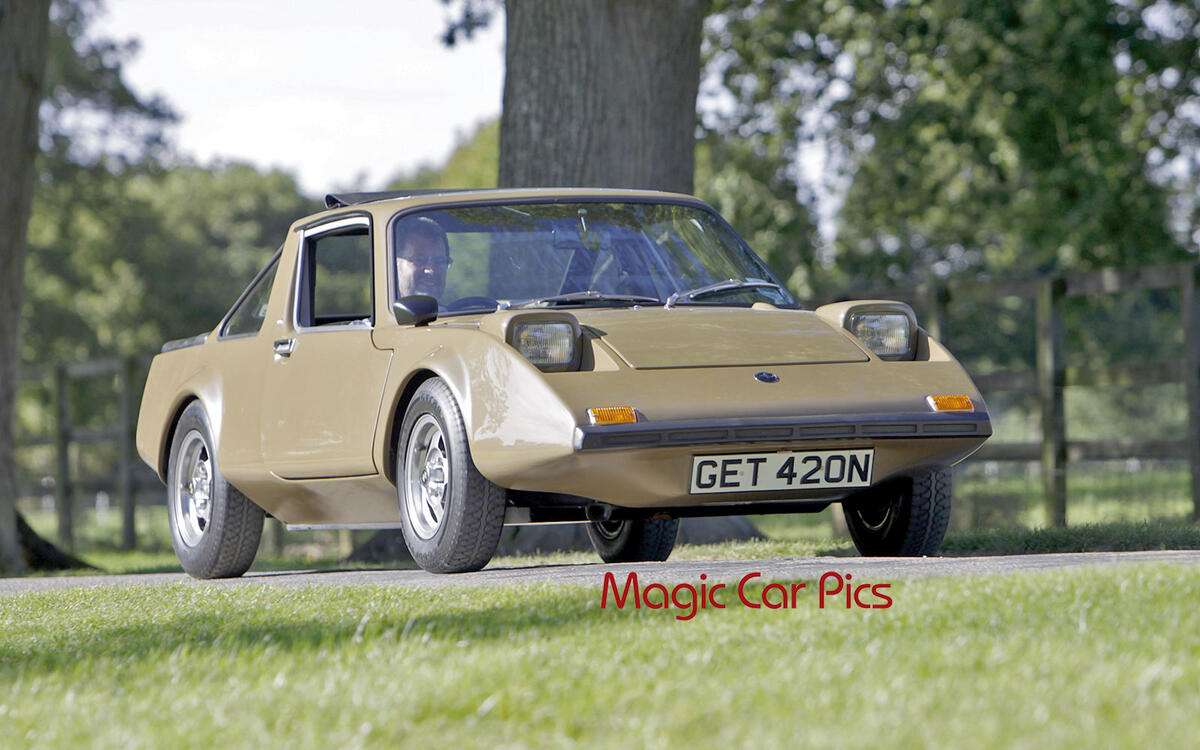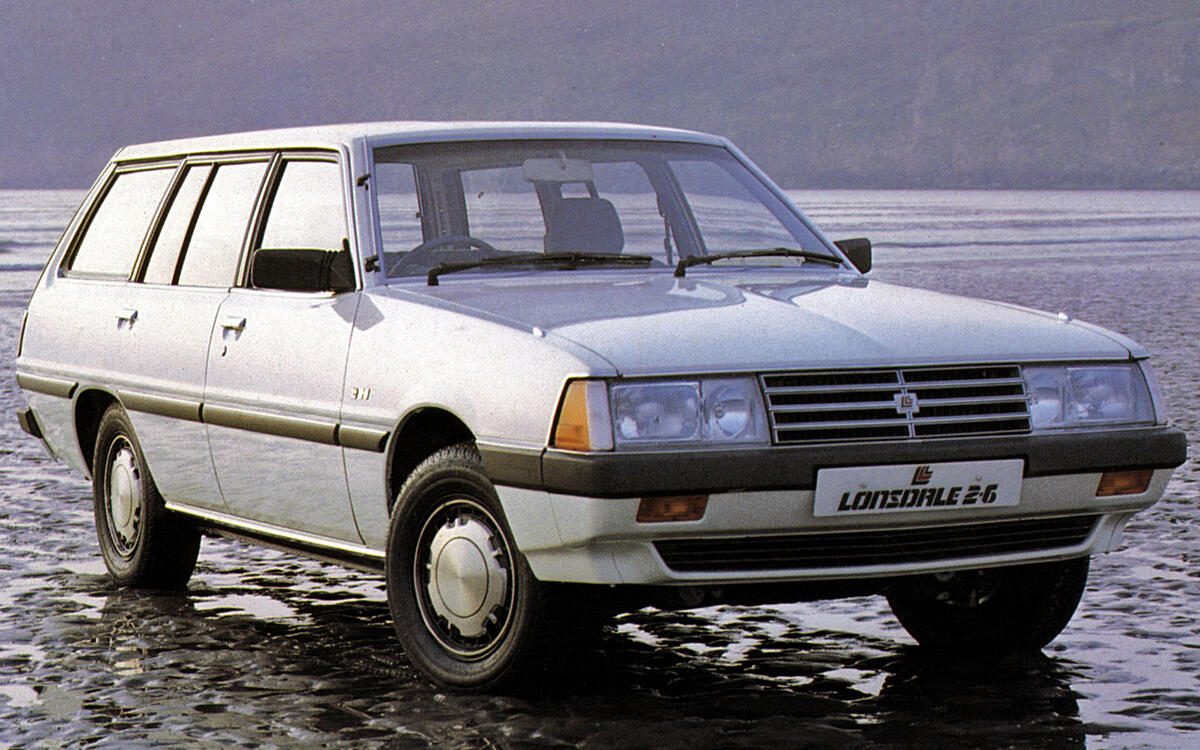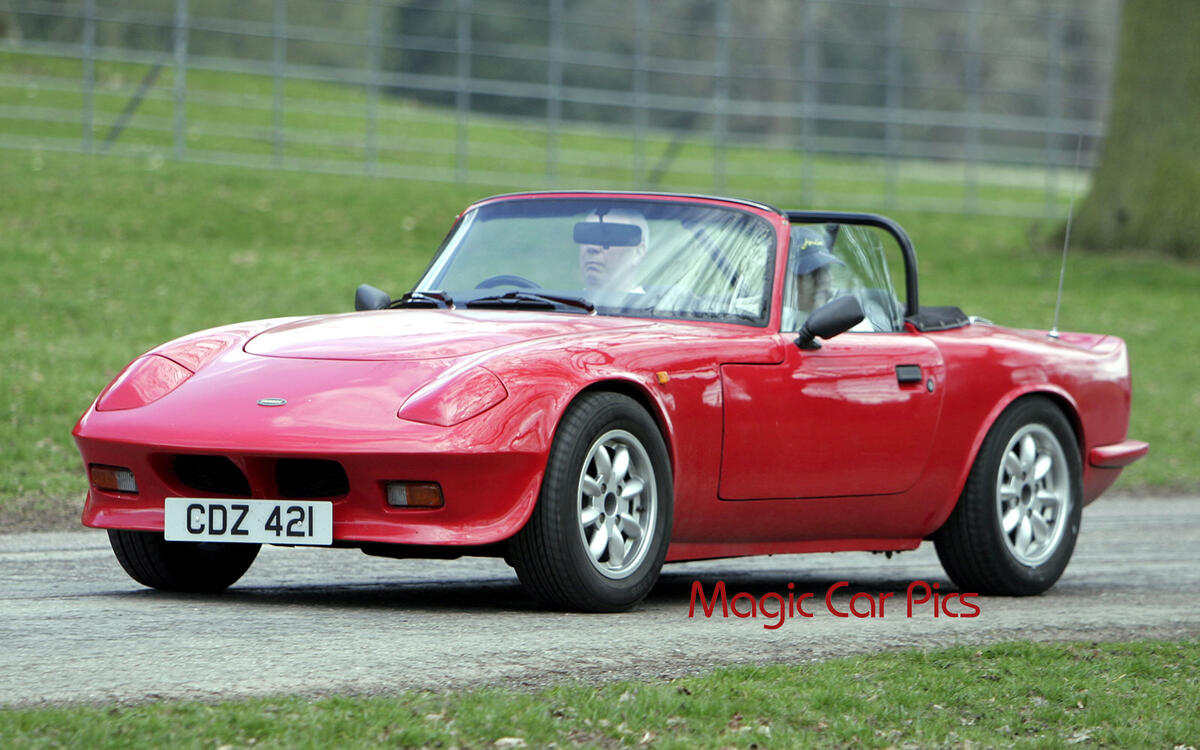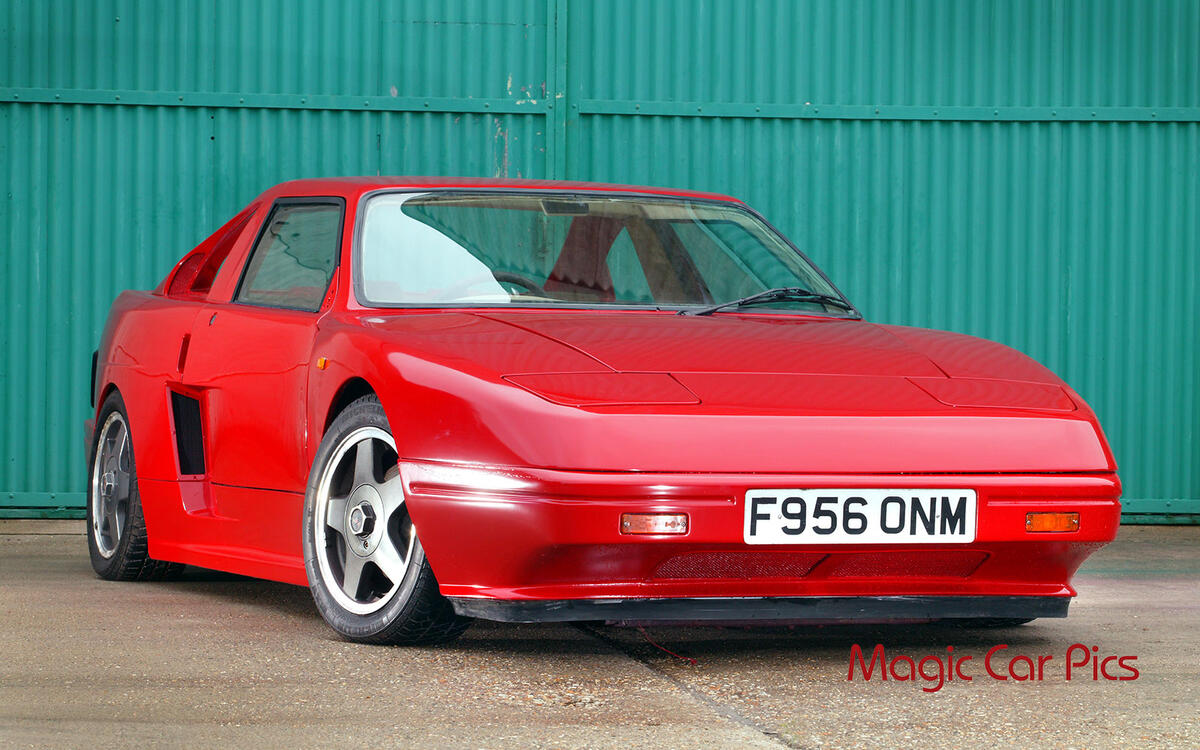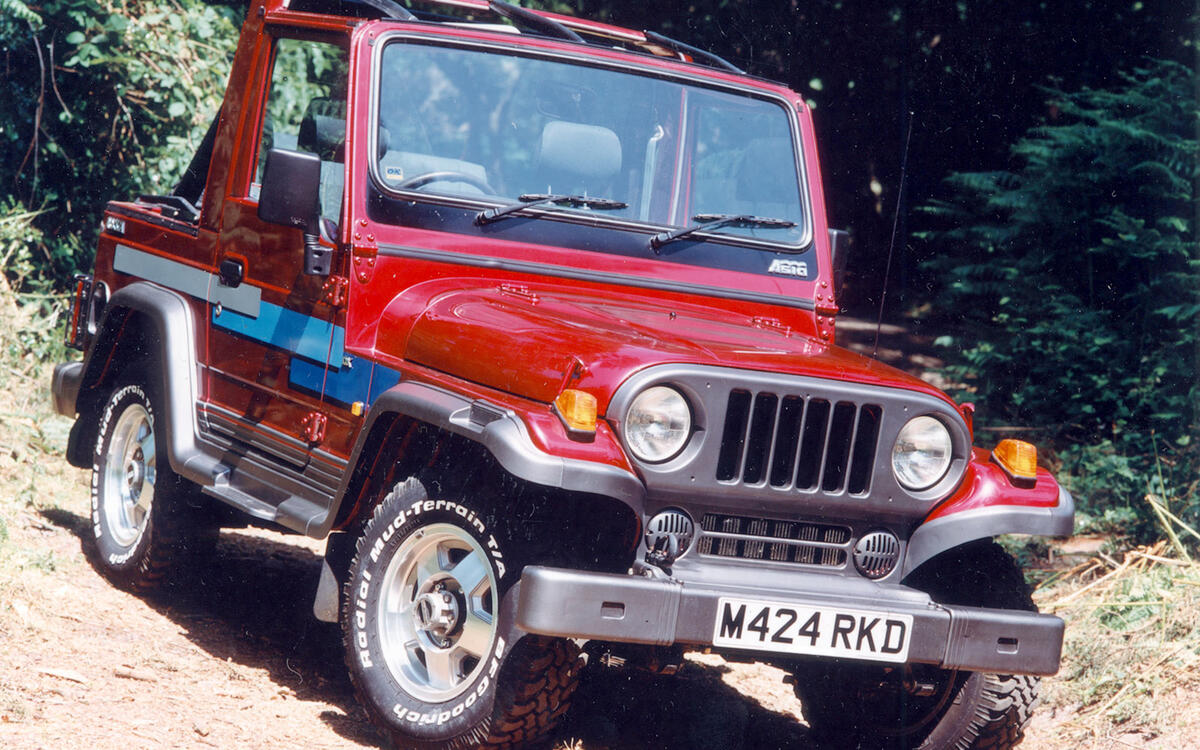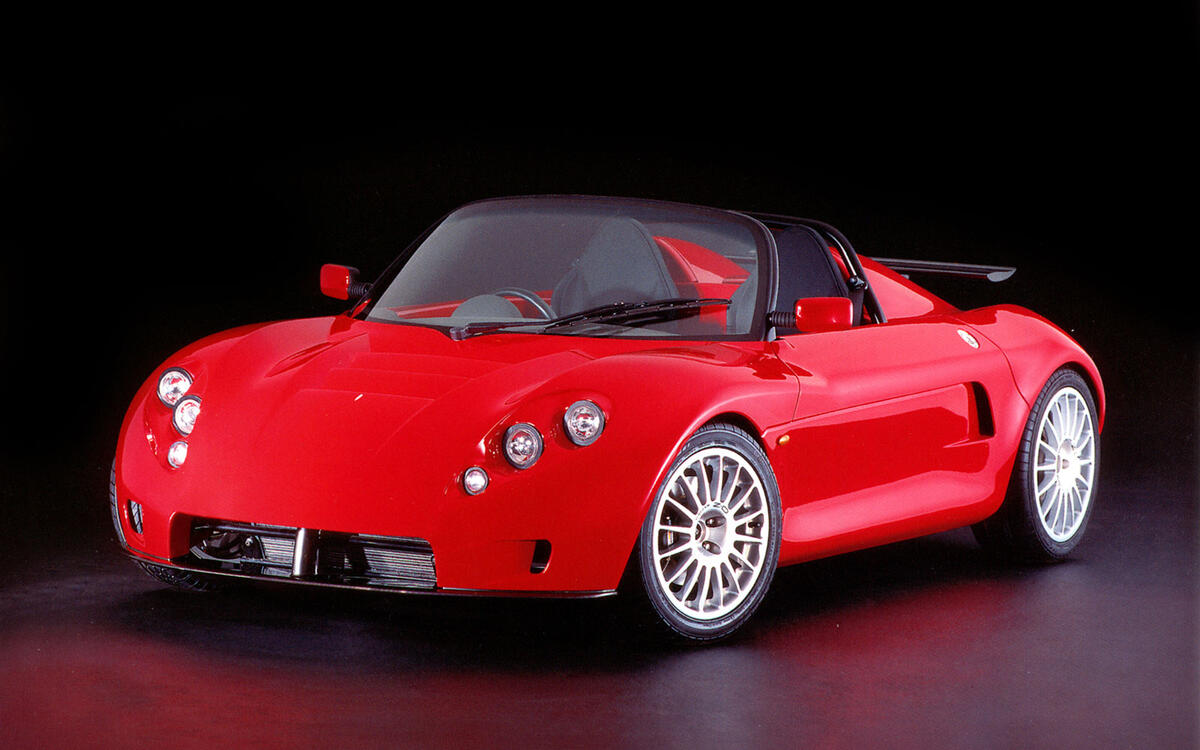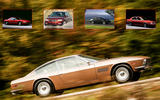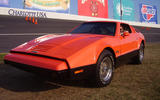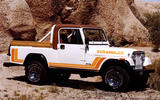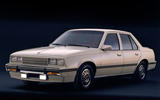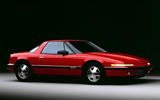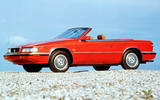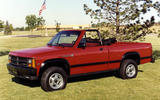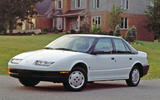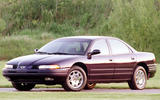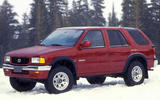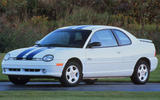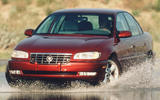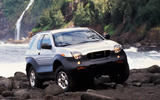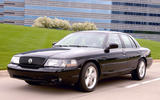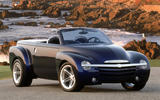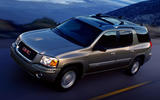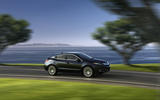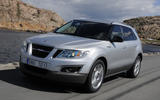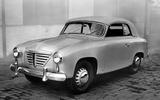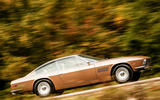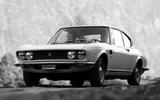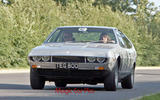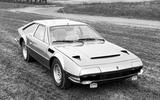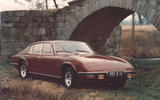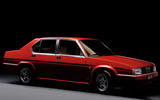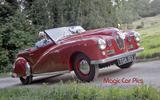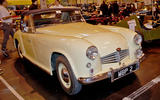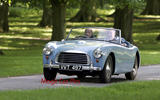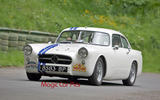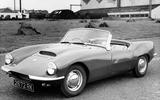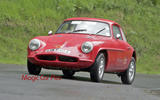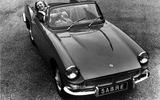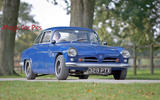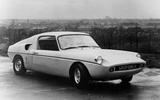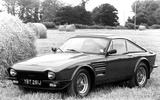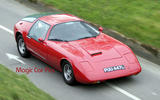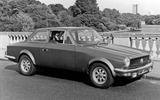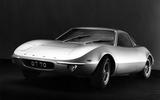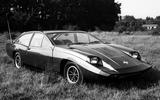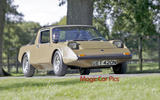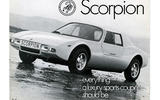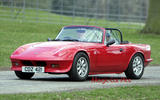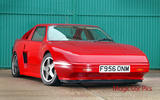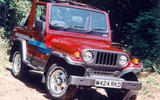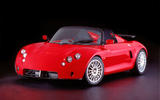 Slide of
Slide of
If you’re one of those people who likes to out-geek your car-mad friends, cast your eye over this lot and see how many you’re familiar with.
All of these automotive dead ends sold in tiny numbers and, as a result, are now pretty much forgotten. In some cases, that’s entirely deserved, as we don’t fancy the Cadillac Cimarron or Sao Penza being revived any time soon. But not all of these cars were dogs – some deserved a better fate. We'll start with cars aimed at the US market, then go on to Europe and finish off with some marvellously obscure British ones.
 Slide of
Slide of
THE US — Bricklin SV-1 (1974)
Built in Canada, the Bricklin SV-1 represented entrepreneur Malcom Bricklin’s vision of a safe sports car. He got the safety aspect right: the SV-1 boasted a steel roll cage, side rails and sizeable bumpers on both ends. He forgot about the 'sport' aspect, though. The SV-1 launched with a 220hp AMC V8, but later models settled for a 175hp Ford V8 strangled by emissions hardware and bolted to a three-speed automatic transmission.
It’s a dark spot in a Bricklin’s lengthy automotive career, which includes spearheading Subaru’s entry into the US and selling Fiat’s mid-engined X1/9 under the Bertone name during the 1980s. Slide of
Slide of
Jeep CJ-8 (1981)
The Jeep CJ-8 was a CJ-7 with 10 additional inches of sheet metal between the axles. It retained the CJ-7’s legendary off-road capacity, but it was unique in its segment because it was more of a leisure-oriented model than a workhorse. Jeep didn’t replace the CJ-8 until it introduced the Unlimited variant of the TJ-series Wrangler in 2004 and it has confirmed plans to return to the pickup segment with a Wrangler-based model by the end of the decade.
 Slide of
Slide of
Cadillac Cimarron (1982)
The Cimarron was Cadillac’s hotly anticipated answer to compact luxury cars such as the BMW 3 Series and the then upcoming Mercedes-Benz 190. Instead of developing an entry-level model from scratch, Cadillac took the contentious route of re-engineering a Chevrolet Cavalier. It’s as if Mercedes tried to turn a Renault 18 into the 190.
Underpowered and overly austere, the Cimarron was a disaster. Adding a V6 to the line-up (and later making it standard) was too little, too late to save its career. The Cimarron left its mark on Cadillac history in the worst possible way. John Howell, Cadillac’s product director from 2004 to 2010, kept a photo of the Cimarron in his office captioned: “Lest we forget.” Slide of
Slide of
Merkur XR4Ti (1985)
This may look familiar to Europeans but not to many Americans. Ford believed selling its European Sierra XR4i in the US would help it fend off competition from the likes of BMW, Mercedes-Benz and Audi. It chose to market the car under a new brand called Merkur – a name presumably chosen because it sounded more German – and was a project championed by one Bob Lutz.
The US-spec model received a turbocharged 2.3-litre four-cylinder engine instead of a V6, which explains the “T” in its name. Too esoteric, the XR4Ti retired in in 1989 after Ford imported about 42,000 examples from Germany. The bigger Merkur Scorpio suffered the same fate. Ford would not import any cars from Germany again until 2016, when the Focus RS started arriving. Slide of
Slide of
Buick Reatta (1988)
Offered as a coupé and as a convertible, the Reatta sat at the very top of the Buick line-up in the late 1980s. It was built largely by hand in a facility located in Lansing, Michigan, and it was a relatively advanced car for its era. Buyers could order 16-way adjustable seats, automatic headlights and even a touchscreen, although this forward-thinking feature was phased out before the end of production.
Buick built nearly 22,000 examples of the Reatta between 1988 and 1991. The model was not replaced and Buick hasn’t sold a two-seater model since. Slide of
Slide of
Chrysler TC by Maserati (1988)
Chrysler, and Maserati's parent company De Tomaso, agreed to jointly build a sports car in the mid-1980s. The idea was brilliant on paper: Chrysler would leverage the prestige associated with the Maserati name to build a flagship model capable of taking on some of the finest two-doors on the US market.
The decision to assemble the TC in Milan delayed the start of production by about two years. Engine options included a 2.2-litre four-cylinder with a Cosworth-designed 16-valve head and a V6 from Mitsubishi. Chrysler pulled the plug on the project after importing about 7300 cars to the US. In hindsight, using a true Maserati engine could have given the TC’s career a significant boost. Slide of
Slide of
Dodge Dakota Sport Convertible (1989)
Buyers met the Dodge Dakota Sport Convertible with a collective “Wait, what?” followed by a “Why?” when it broke cover in 1989. As its name implies, it was a Dakota trucklet with a manual soft top, although the 'Sport' part of the moniker was highly debatable. It didn’t exist for long and never spawned competition from Ford or Chevrolet, but it remains one of the most unique pickups of the 1980s.
 Slide of
Slide of
Saturn S-Series (1990)
Famously launched as “a different kind of car company”, Saturn took a novel approach to building an economy car to distance itself from other brands in the General Motors empire. In reality, it was an attempt at reclaiming some of the market share the group had reluctantly given up to its Japanese rivals during the 1980s.
Saturn’s first-generation S-Series model was an econobox with plastic body panels offered as a saloon, a wagon and a coupé. The company widely advertised its 'no haggle' pricing and built its millionth car in 1995, just five years after manufacturing the first one. Mass-produced and mass-destroyed, the original Saturn S-Series is a rare sight on US roads today. Slide of
Slide of
Eagle Vision (1992)
The Vision represented Eagle’s vision (sorry) of an aerodynamic sports saloon in the early 1990s. It was designed to replace the Eagle Premier, which was closely related to Europe's Renault 25, and it shared its LH architecture with comparable models built by Dodge and Chrysler. Lacklustre performance and haphazard build quality sealed its fate and Chrysler axed the Eagle brand after 1997.
 Slide of
Slide of
Honda Passport (1993)
Honda’s first SUV was actually an Isuzu. Instead of developing an off-roader from scratch, company officials asked Isuzu to slap Honda emblems on the Rodeo. It was blatant badge-engineering, but the Passport was surprisingly popular in the US, thanks to Honda’s reputation for building stellar cars. It carried on for two generations until the brand replaced it with the original Pilot, which it designed in-house.
 Slide of
Slide of
Dodge Neon ACR and Dodge Neon R/T (1995 and 1998)
Turning the Dodge Neon, which Chrysler manifestly crafted from a solid block of mediocrity, into a performance car was easier said than done. Dodge stepped up to the challenge with the Neon American Club Racer (ACR), a sportier version aimed at enthusiasts on a tight budget.
Starting with a base model, Dodge added a 150hp 2.0-litre four-cylinder engine, a shorter final gear, quicker steering hardware and a raft of suspension updates. The ACR even received adjustable Koni dampers in 1997 and buyers could choose to take out the air-con and the radio. It certainly wasn’t an M3, but the Neon ACR became successful in Sports Car Club of America events during the 1990s. The Neon R/T introduced in 1998 bundled many of the ACR’s upgrades in a street-friendly package. Slide of
Slide of
Suzuki X-90 (1995)
The X-90 was Suzuki’s effort at turning the Vitara into a more lifestyle-oriented model, as evidenced by its three-box design and removable roof panels. Many predicted tiny SUVs with thrift shop-like prices would be the next big thing in the US, but the X-90 fell flat on its head. Suzuki put it out to pasture after a two-year production run. Today, it’s best remembered for its role in promoting Red Bull energy drinks.
 Slide of
Slide of
Cadillac Catera (1997)
The learnings from the Cimarron debacle faded during the 1990s. The Cadillac Catera likely looks vaguely familiar because it was known as the Vauxhall/Opel Omega in Europe. It was yet another attempt by Cadillac to badge-engineer its way into a segment dominated by Mercedes-Benz and BMW. Luxury buyers had a difficult time taking it seriously. Using a duck-like cartoon named Ziggy to advertise the Catera as “the Caddy that zigs” didn’t help.
 Slide of
Slide of
Isuzu Vehicross (1997)
Buyers looking for an SUV with unique styling could do a lot worse than the Isuzu Vehicross. Previewed by a 1993 concept, it commanded attention with one of the most daring designs on the road. Isuzu built less than 6000 examples, with most of the production run going to the US and a small chunk set aside for the Japanese market.
 Slide of
Slide of
Mercury Marauder (2003)
Mercury revived the Marauder nameplate for the 2003 model year on a high-performance variant of the Grand Marquis, a body-on-frame land yacht prized by taxi companies and livery services.
Presented as a four-door muscle car, the Marauder used a 302hp, 4.6-litre V8 engine sourced from the Ford Mustang Mach 1. Visual tweaks (including a model-specific grille and tinted lights) set the Marauder apart from other Panther platform-based saloons. Marauder production ended in 2004 after Mercury built about 11,000 examples. Ford mothballed the brand in 2011. Slide of
Slide of
Chevrolet SSR (2003)
Chevrolet trailed rival Chrysler in the retro car game in the early 2000s. When Chrysler introduced the PT Cruiser, Chevrolet fired back years later with the HHR; when Plymouth launched the Prowler, Chevrolet came out with the Super Sport Roadster (SSR).
The 1940s pickup-inspired sheet metal hid a platform shared with the Chevrolet’s Trailblazer SUV and featured a V8 engine. It offered two seats, a pickup box hidden under a tonneau cover and a retractable hard top. Less than 25,000 examples were built in the same factory that churned out the Buick Reatta. Slide of
Slide of
GMC Envoy XUV (2004)
GMC tried combining a pickup truck and an SUV, two of America’s favourite vehicles, into a single model named Envoy XUV. It looked like a regular SUV at first glance, but it offered a retractable rear roof panel that made carrying taller items a breeze. A fold-down mid-gate similar to the one in the Chevrolet Avalanche separated the passenger and cargo compartments.
The idea wasn’t brand new; the 1963 Studebaker Wagonaire offered a similar solution. The Envoy XUT still stands out as one of the few GMC models that wasn’t a carbon copy of a Chevrolet. Slide of
Slide of
Acura ZDX (2009)
Acura quietly admits it developed the ZDX as a two-door coupé, not as a four-door fastback. The extra set of doors was added at the last minute when market research suggested a two-door model would fail to win over buyers. In hindsight, the number of doors might not have mattered as much as the polarising design. In the US, annual ZDX sales peaked at 3,259 examples in 2010, its first full calendar year on the market, before embarking on a nosedive. Acura dealers moved 1,564 examples in 2011, 775 in 2012, 362 in 2013 (when production ended) and 78 in 2014. The final two unsold examples found a home in 2015.
 Slide of
Slide of
Saab 9-4X (2011)
The 9-4X was Saab’s long-awaited entry into the small luxury SUV segment. It shared its basic mechanical components with the Cadillac SRX, but it wore a Saab-specific design that borrowed styling cues from the second-generation 9-5. Too little, too late, the 9-4X couldn’t steer Saab away from bankruptcy. The company’s records indicate it built less than 1000 examples of the 9-4X between February and December 2011.
 Slide of
Slide of
THE EUROPEANS — Goliath GP700 (1950)
Despite being blessed with a mere two-cylinder two-stroke 688cc engine, the GP700 was highly innovative with front-wheel drive, full-width styling and, from 1952, there was even fuel injection.
 Slide of
Slide of
Volvo P1900 (1956)
No, that's not a typo. Before the famous P1800 came the P1900 – but just 68 were made. It was a glassfibre-bodied open-topped sports car inspired by the plastic Chevrolet Corvette.
 Slide of
Slide of
Facel Vega HK500 (1959)
If you wanted a fast, luxurious and exclusive grand tourer in the late 1950s or early 1960s, Facel Vega was the company to go to. Things kicked off in 1954 with the FV, which was overhauled in 1957 to become the HK500, with a 5.9-litre or 6.2-litre Chrysler V8.
Admittedly somewhat better known than most of the cars here, Facel Vega was France's last chance of producing a proper luxury car marque, and it deserves better than being remembered as the car acclaimed writer Albert Camus crashed and died in. The company followed him four years later in 1964. Slide of
Slide of
Monteverdi 375 (1967)
Swiss BMW importer Peter Monteverdi moved into building ultra-exclusive exotica in 1967; over the next decade, there would be a string of Chrysler-engined specials including the splendid 7.0-litre 375L High Speed pictured here.
 Slide of
Slide of
Fiat Dino (1967)
Fiat's Dino used the same 2.0-litre or 2.4-litre V6 engines as Ferrari's car of the same name. All came with left-hand drive, with Pininfarina responsible for styling the spyder edition while Bertone designed the coupé.
 Slide of
Slide of
Iso Lele (1969)
Italian firm Iso started out building the Isetta bubble car. BMW bought the rights to this, leaving Iso to make big, costly V8-engined luxury cars such as the Lele, of which 317 were made.
 Slide of
Slide of
Lamborghini Jarama (1970)
Effectively a cut-down edition of Lamborghini's Espada, the Jarama featured the same 3929cc V12 up front, 2+2 seating and 350-385bhp. Just 327 were made between 1969 and 1974.
 Slide of
Slide of
Volkswagen K70 (1970)
NSU developed the K70 to fill the gap between the Prinz and the Wankel-powered Ro80, yet the saloon ended up joining the Beetle in the Volkswagen portfolio. The K70 earned the distinction of becoming the brand’s first full-production car with a water-cooled, front-mounted engine.
Volkswagen purchased NSU in 1969 and it received every project the brand was working on as part of the deal. While officials initially canceled the K70, they resurrected it after realising that it was ready for production. They put it back on track on the condition that it carried a Volkswagen emblem. About 210,000 examples rolled off the assembly line. NSU’s plans for an estate version never materialised with Volkswagen at the helm. Slide of
Slide of
De Tomaso Longchamps (1972)
A short-wheelbase edition of the Jaguar XJ-esque Deauville, the Longchamp featured a 330bhp 5.8-litre V8. Offered as a coupé or convertible, 302 were produced in all.
 Slide of
Slide of
Monica 560 (1972)
Intended to compete with Bristol, the Monica was a French confection that featured Chrysler V8 power. Finally bought by Panther, the car never really made production, although 35 or so were made.
 Slide of
Slide of
Citroën LN (1976)
Nothing more than a rebadged Peugeot 104 with a 2CV engine, the LN was remarkably unremarkable; it was sold only in its home market. But British consumers were able to buy the LN’s successor, the four-cylinder LNA, with Pug 104 power. Few did.
 Slide of
Slide of
Dacia Denem (1982)
Dacia reckoned the Renault 12, first revealed in 1969, was cutting-edge in the early 1980s, so it jumped at the chance to produce its own version. But when the marque was introduced to the UK, buyers steered clear.
 Slide of
Slide of
Alfa Romeo 90 (1984)
Alfa Romeo has made some odd decisions over the years, but this must rate as one of the barmiest. The 90 sat between the equally forgettable Alfetta and disastrous Six; even for a 1980s Alfa Romeo, it was unbelievably badly built.
 Slide of
Slide of
THE UK — Paramount 1.5-Litre (1950)
Throughout the 1950s, there seemed to be a new low-volume British car maker springing up every week. Paramount was based in Derbyshire and built Ford-engined sporting cars, but just 70 or so were made before production ended in 1956.
 Slide of
Slide of
Marauder (1950)
George Mackie and Peter Wilks left the Rover Car Company to build their own sports car in conjunction with Spen King; the Rover P4-based Marauder was the result. All of 15 were made, though.
 Slide of
Slide of
Swallow Doretti (1954)
Swallow was founded by Jaguar's William Lyons, then sold to the giant Tube Investments conglomerate. The company built 276 Dorettis – arguably prettier than the Triumph TR2 on which it was based – before the plug was pulled.
 Slide of
Slide of
Peerless GT (1958)
Later revived as the Warwick, the Peerless used Triumph TR3 mechanicals and a bespoke tubular steel chassis. Around 300 of these four-seat coupés were produced in 1958 before Peerless disappeared.
 Slide of
Slide of
Elva Courier (1958)
Taking its name from the French for 'she goes' (elle va), the Courier was Elva's most successful model. Around 400 examples were made between 1958 and 1961, most powered by an MGA or MGB engine.
 Slide of
Slide of
Rochdale Olympic (1960)
Rochdale came from, yes, Rochdale and built its first glassfibre cars in 1952, with the incredibly aerodynamic Olympic appearing in 1960. Early cars featured Riley 1.5 engines; from 1962, there was 1.5-litre Ford Cortina power.
 Slide of
Slide of
Reliant Sabre (1961)
Initially offered with Ford Consul four-cylinder power before a change to a six-pot Zodiac unit in 1962, the Sabre was originally developed for Israeli company Autocars. It was produced in both coupé and convertible forms.
 Slide of
Slide of
Tornado Talisman (1962)
Tornado sprang up to offer glassfibre bodyshells that could be built from kits by enthusiasts in their garages. The Talisman was easily the company’s biggest-selling model; 186 were sold before the company closed in 1964.
 Slide of
Slide of
Unipower GT (1966)
Universal Power Drives was better known for its agricultural machinery, but 75 examples of this interesting diversion were also created, each fitted with a mid-mounted Mini engine displacing either 998cc or 1275cc.
 Slide of
Slide of
Trident Clipper (1967)
Starting out as a TVR at the 1965 Geneva motor show, the Trident went into production independently and lasted a decade – although just 200 or so were made in all.
 Slide of
Slide of
Piper GTT (1968)
Piper began building racing cars, then moved into road-going models in 1967. However, over a six-year run, just 100 or so of these plastic-bodied sports cars were made. Most had Ford power but some came with Alfa Romeo or Austin-Healey engines.
 Slide of
Slide of
Gilbern Invader (1969)
The only car company to be based in Wales so far, Gilbern set up shop in 1959 and built more than 1000 cars in all, including around 600 of this final model, which used Ford V6 power.
 Slide of
Slide of
Ford GT70 (1970)
While the GT40 quickly became an icon, its successor, the mid-engined V6-powered GT70, didn't take long to fade into obscurity. It was built by Ford of Britain for rallying but never got that far. Just six were made.
 Slide of
Slide of
Marcos Mantis (1970)
Marcos was renowned for its curvy cars, so the angular Mantis came as rather a shock to the system when it was unveiled. Power was from a Triumph 2.5-litre engine and only 32 were made.
 Slide of
Slide of
Clan Crusader (1971)
Set up by ex-Lotus engineers in 1969, the Crusader was killed off by the energy crisis of 1973. The project was revived in 1985 as the Clover, but that soon failed too.
 Slide of
Slide of
Scorpion Coupé (1973)
Like the Clan Crusader, the Scorpion had a rear-mounted Hillman Imp 998cc engine and was killed off by the energy crisis. With its neat glassfibre bodyshell, it promised so much.
 Slide of
Slide of
Lonsdale saloon and estate (1983)
Mitsubishi set up a factory in Australia to build these rebadged Sigmas for the UK, with a choice of 1.5, 2.0 or 2.6 engines. Hardly any were sold, unsurprisingly.
 Slide of
Slide of
Evante 140TC (1986)
Lincolnshire-based Vegantune had been restoring and tuning Lotus Elans for years; this was the company’s own interpretation of the Lotus classic, with Ford-based 1.7-litre or 1.8-litre twin-cam engines.
 Slide of
Slide of
AC Ecosse (1988)
A car that never reached production, the Signature was meant to supersede the 3000ME with an Alfa Romeo-sourced 2.5-litre V6. But there wasn't the money to develop it. Another one of those might-have-beens that automotive history is littered with.
 Slide of
Slide of
Sao Penza (1991)
Take one defunct Mazda 323, rebrand it and what do you have? A Sao Penza. Sao was an offshoot of the South African Motor Corporation but, in less than two years, the Penza had been withdrawn from UK sale.
 Slide of
Slide of
Asia Rocsta (1994)
Unveiled in 1990 but sold in the UK only between 1994 and 1998, this poorly made 4x4 wasn't Kia's finest hour. That’s because it was Kia that sold the car on behalf of Asia, which turned out to be a bad move…
 Slide of
Slide of
Keinath GT (1996)
Looking like an early 1970s Opel GT drop-top, the Keinath featured a 3.0-litre six-pot Senator engine and, notably, a folding hard top before they became popular.
 Slide of
Slide of
Strathcarron SC-5A (2000)
First seen in prototype form in 1996, the production SC-5A was ready in 2000. But Type Approval changes quickly ruled the car illegal, which is why just 20 were produced.
Remember any of these?
Advertisement

